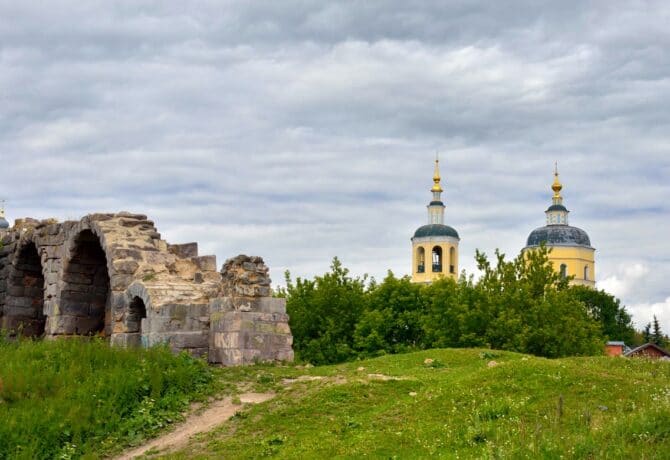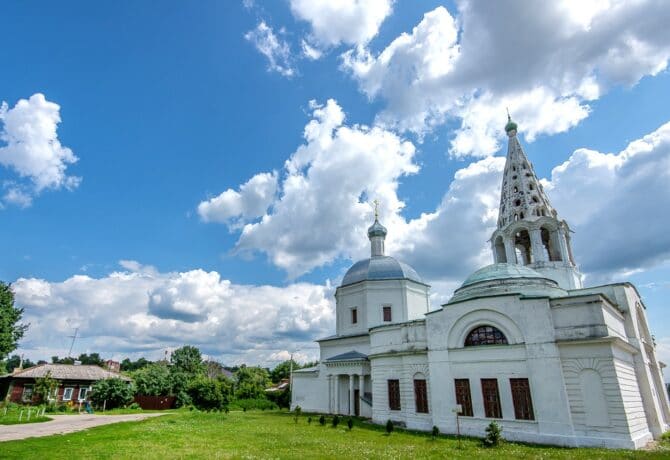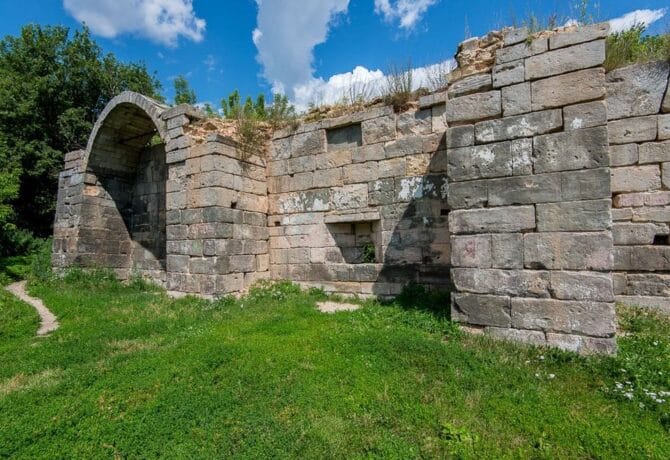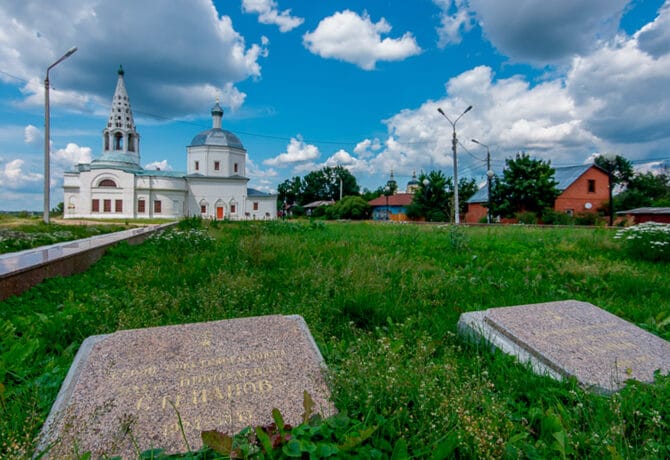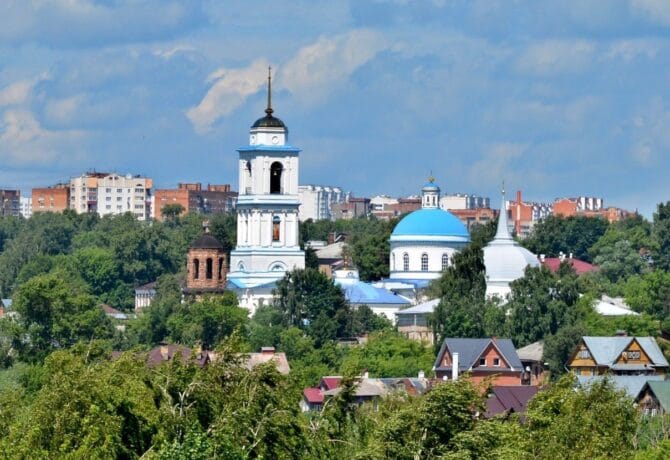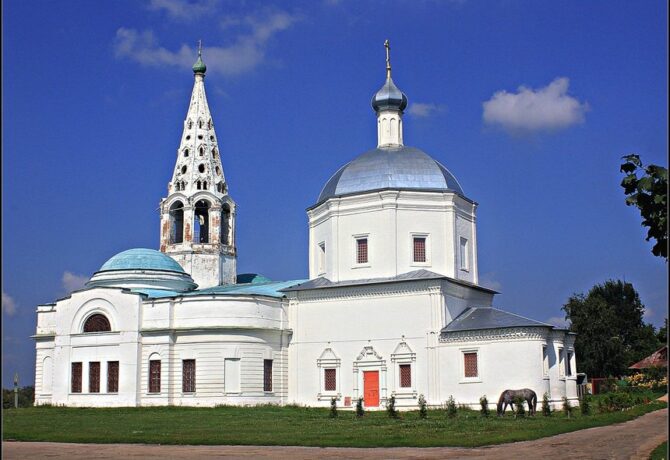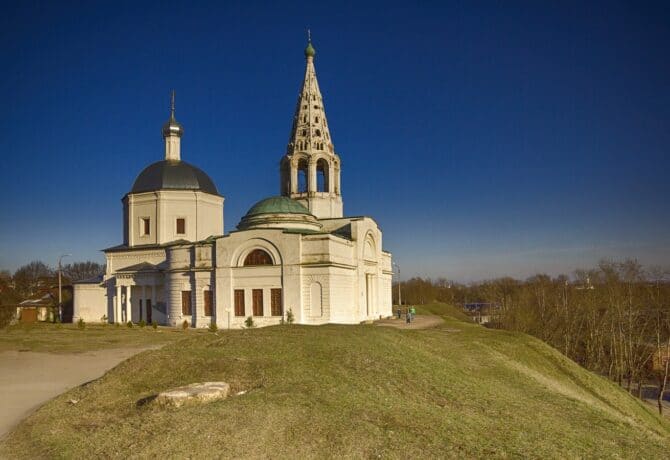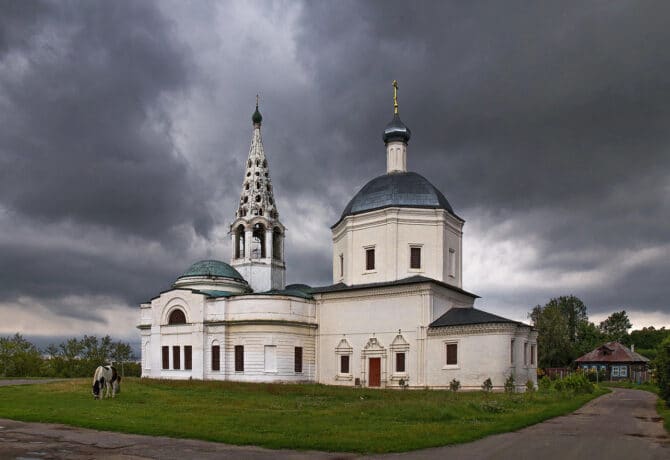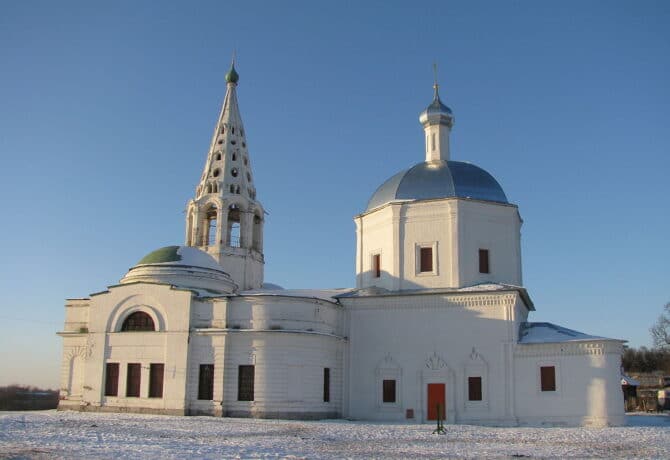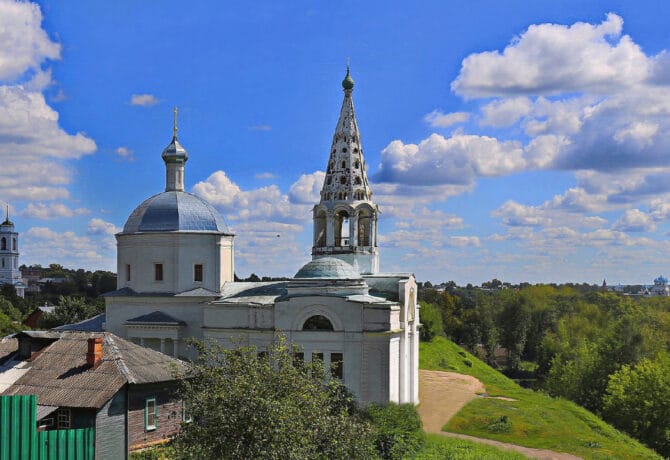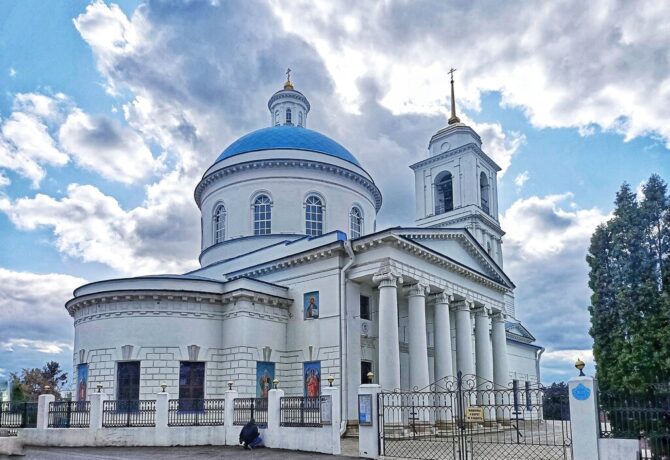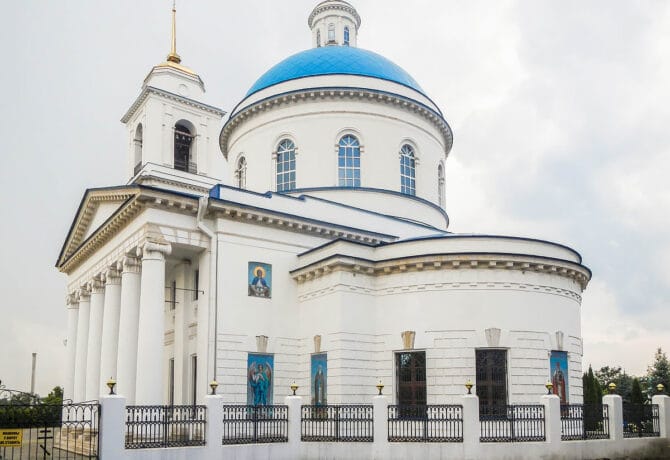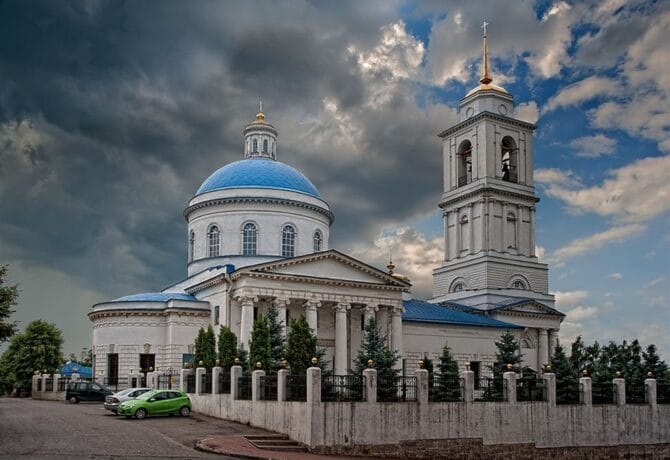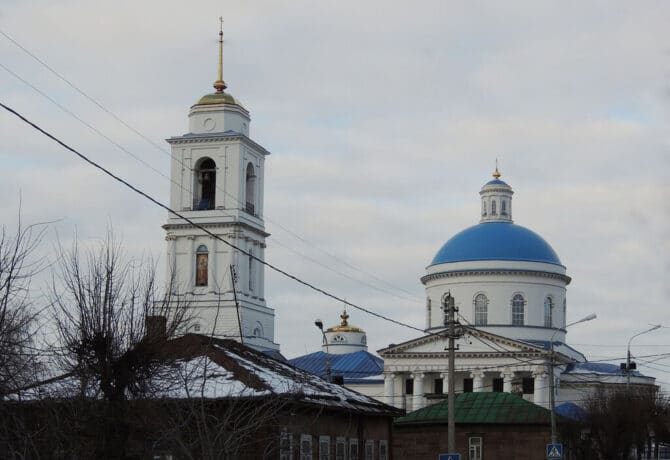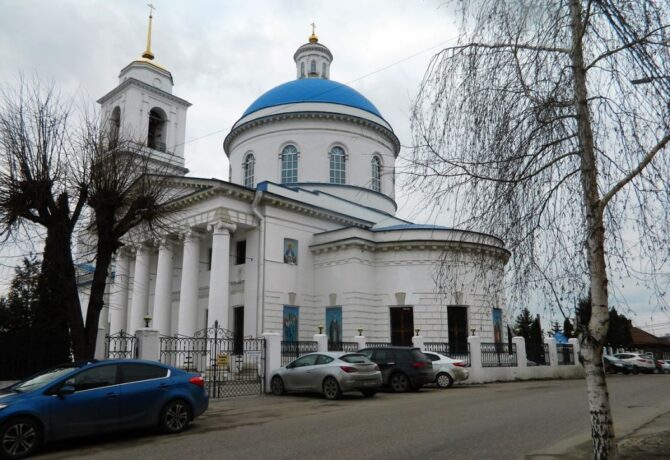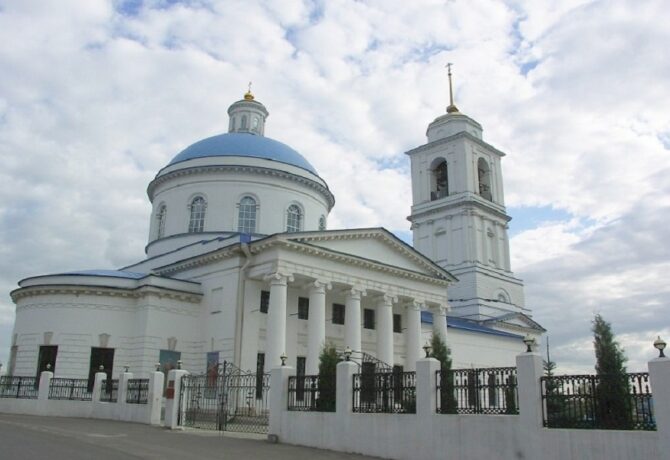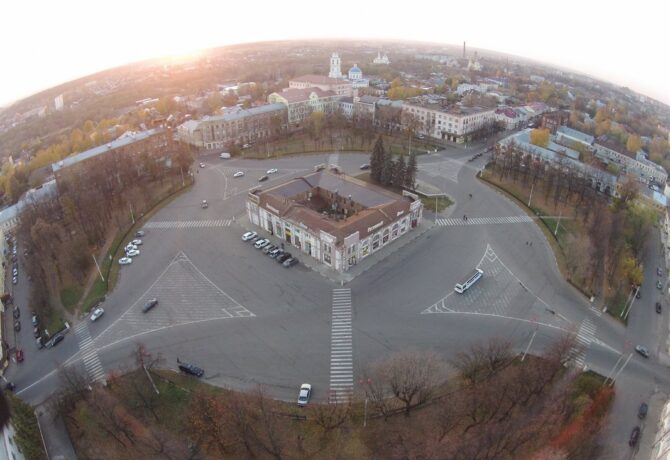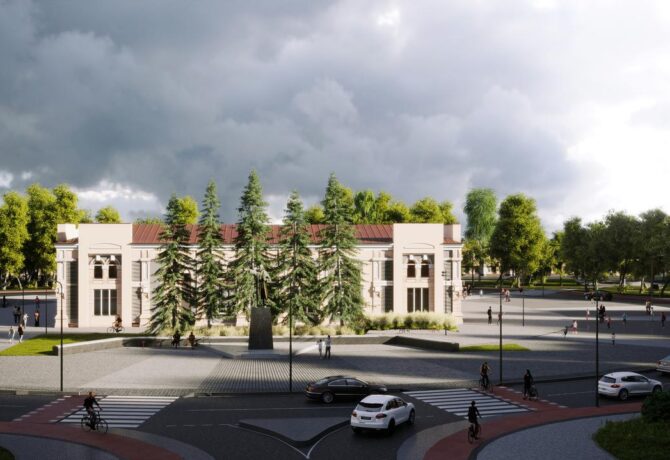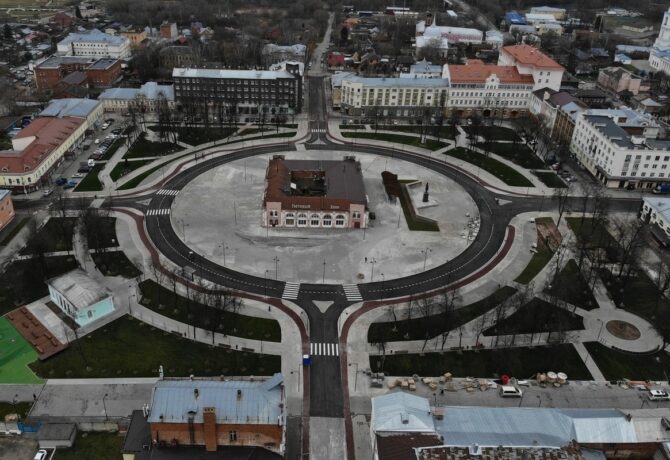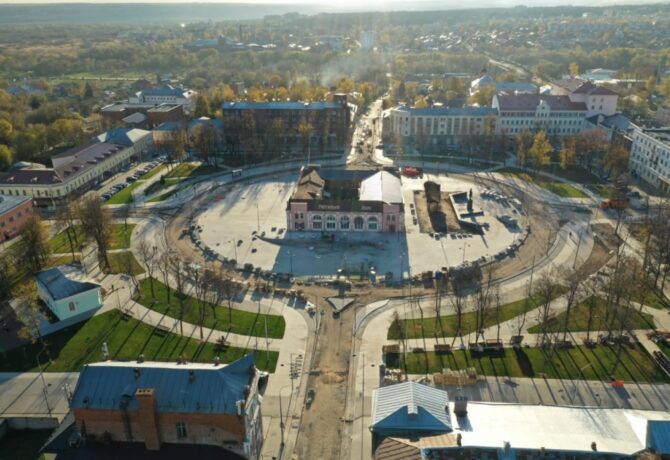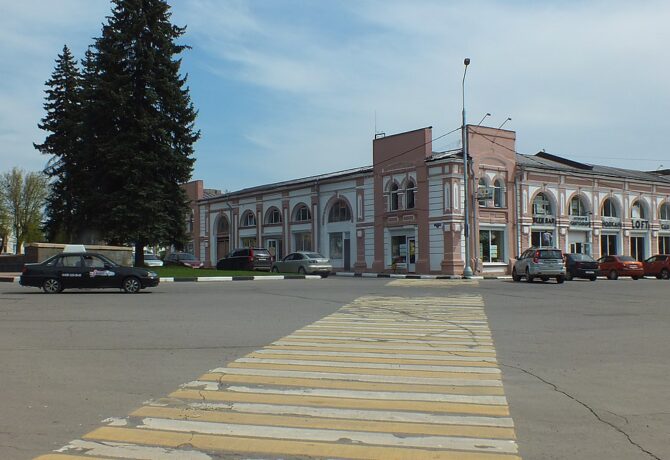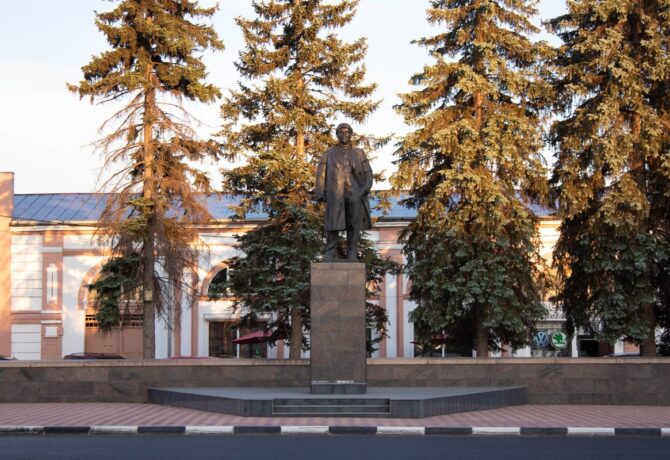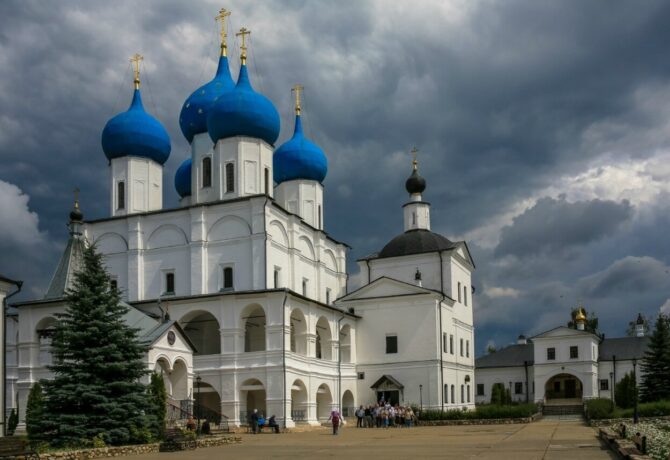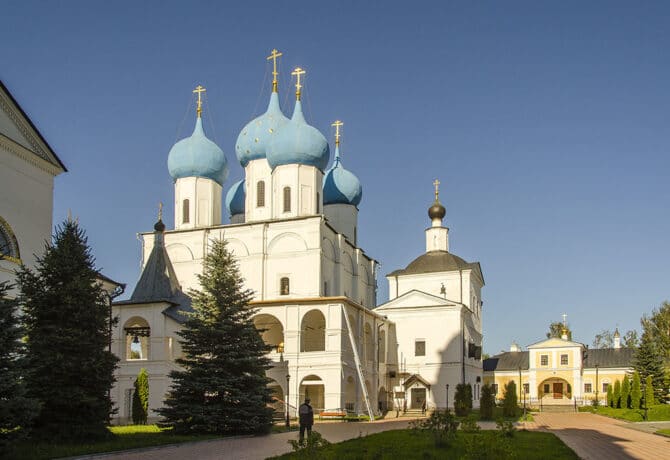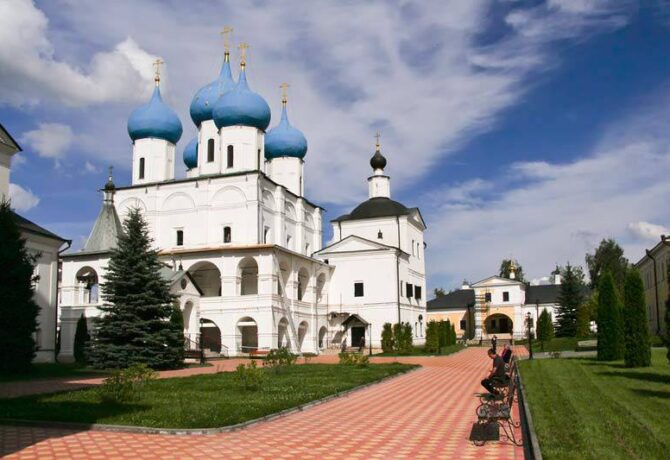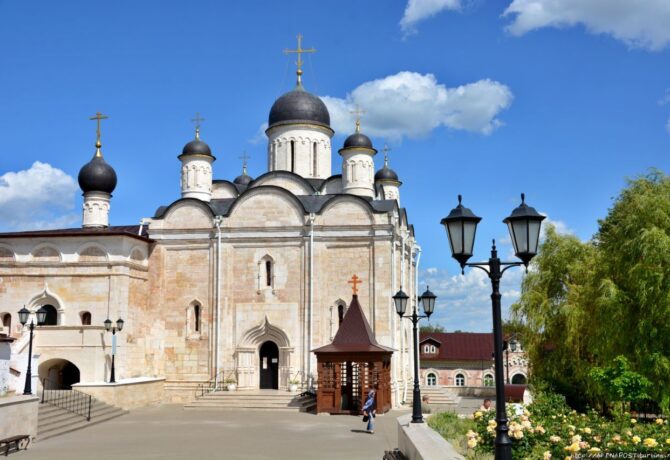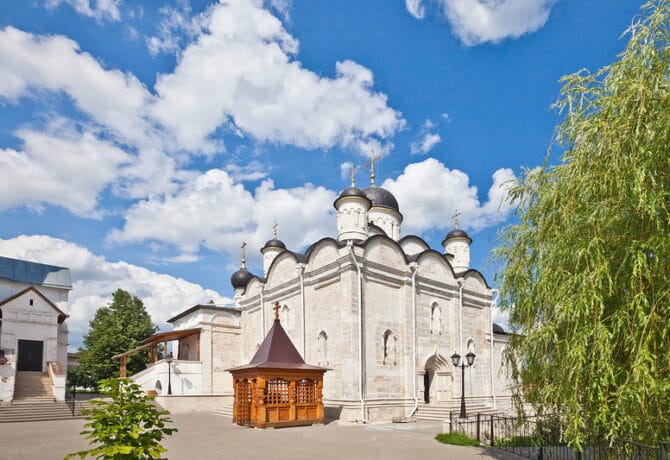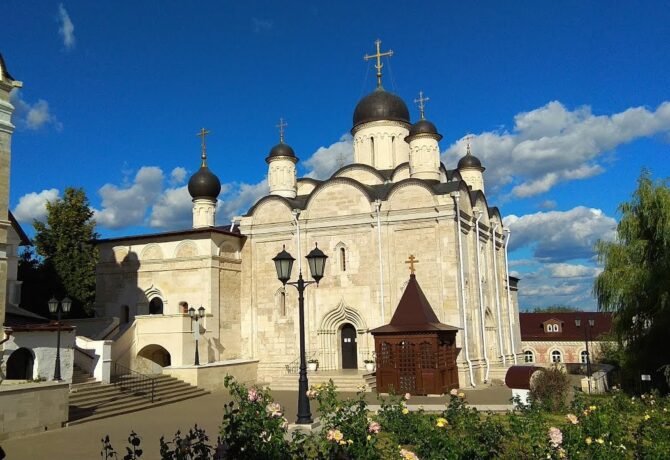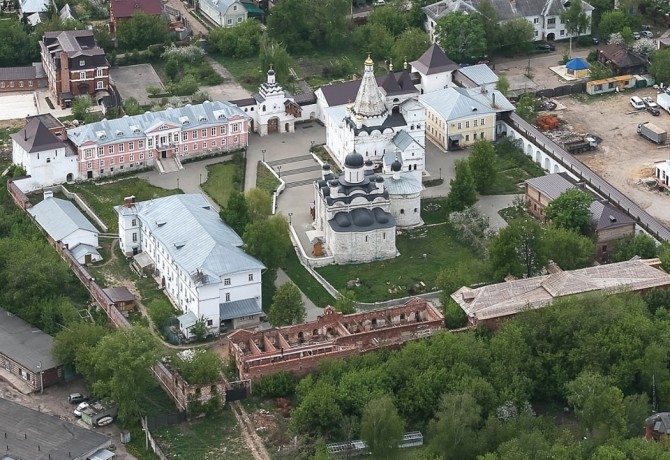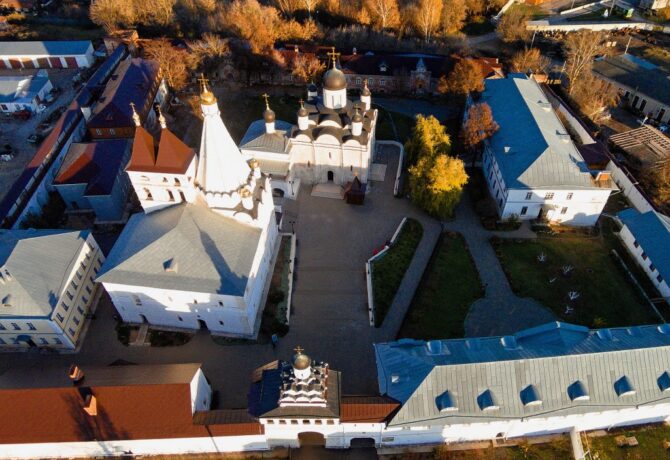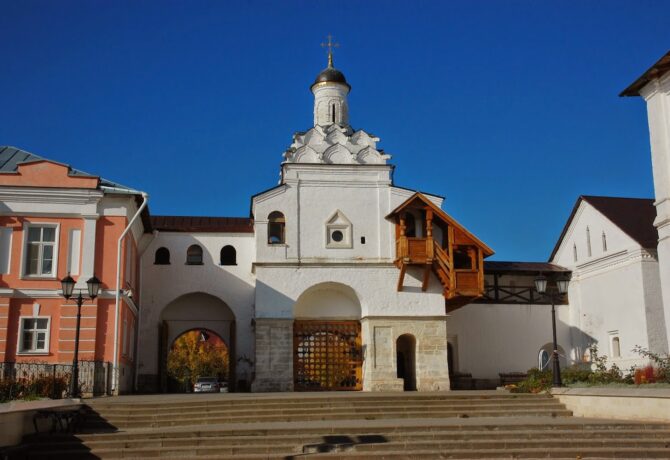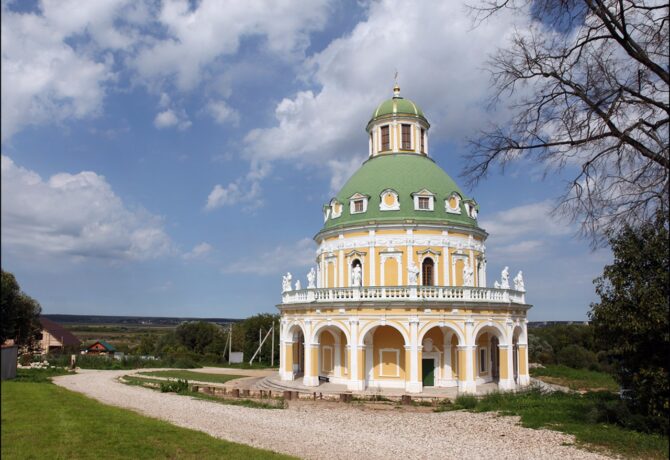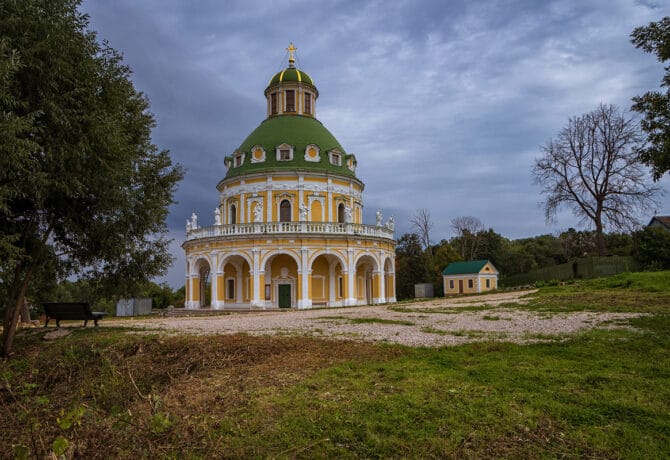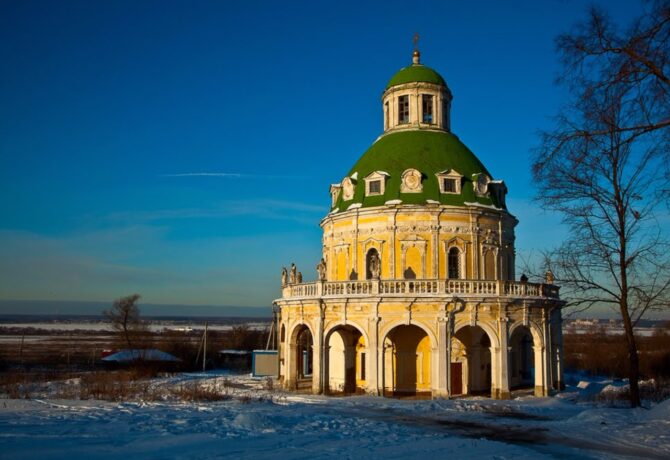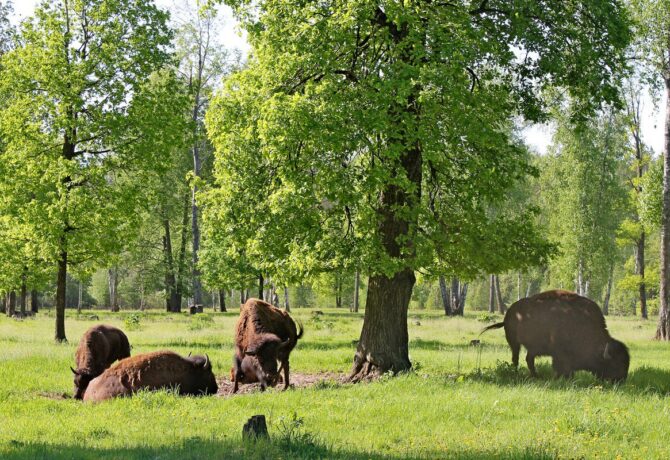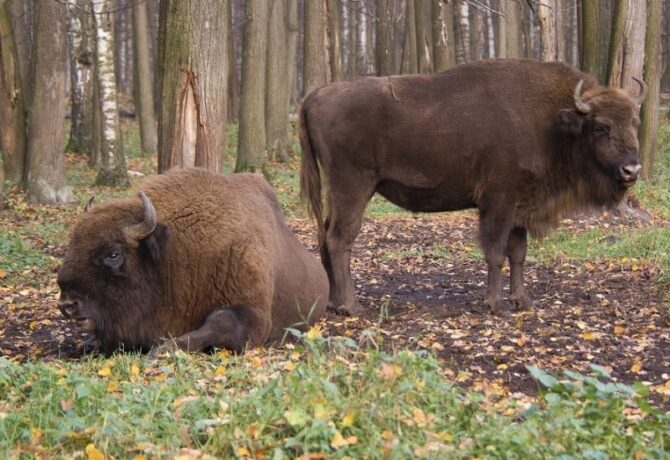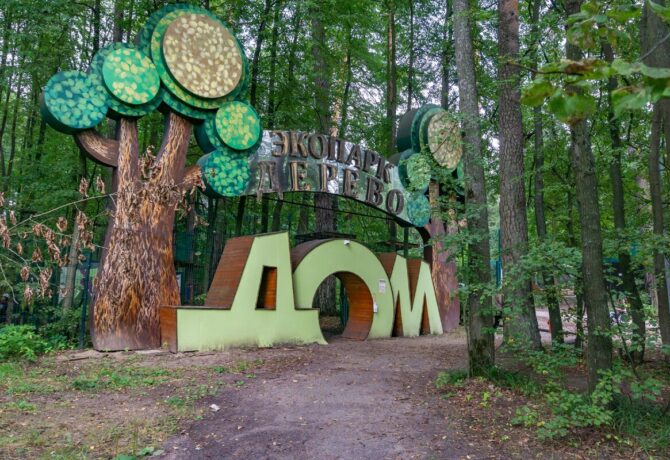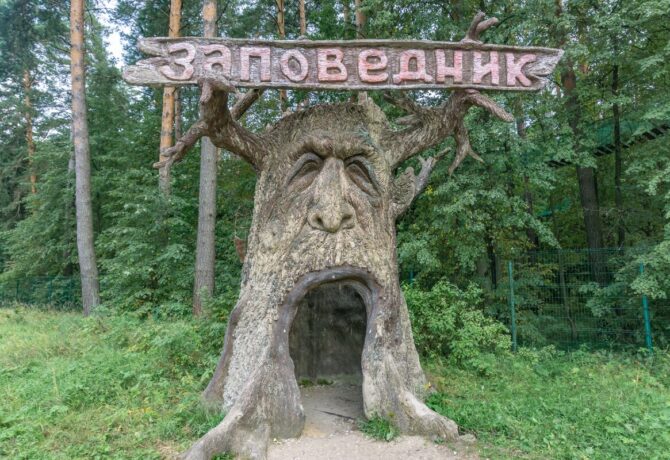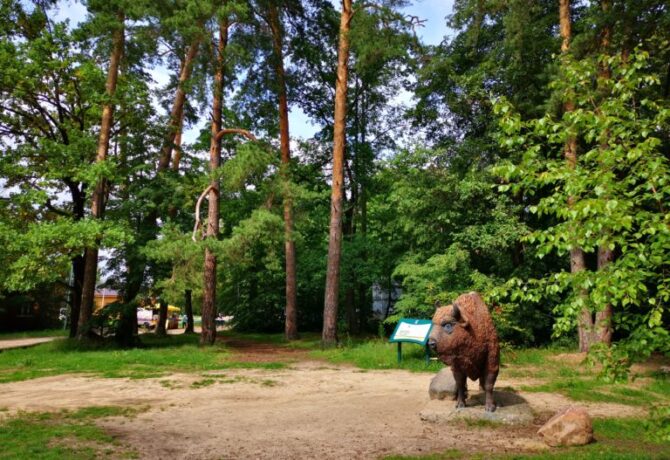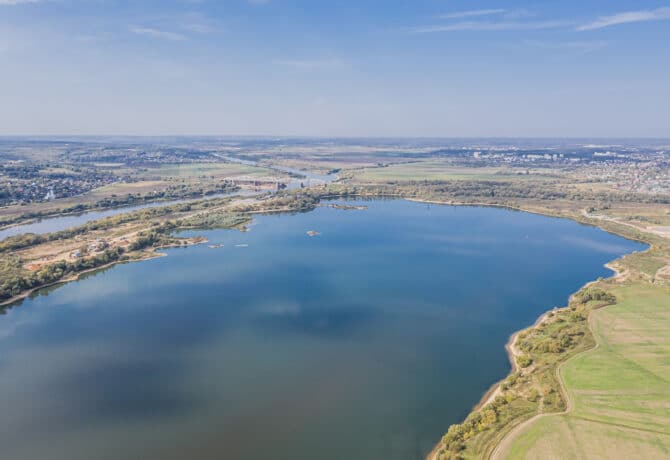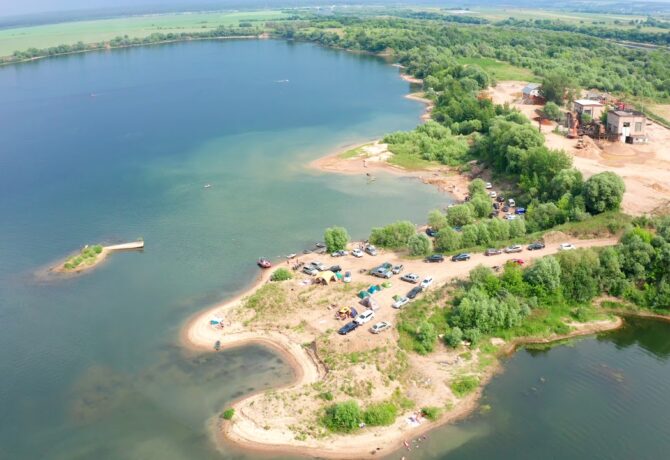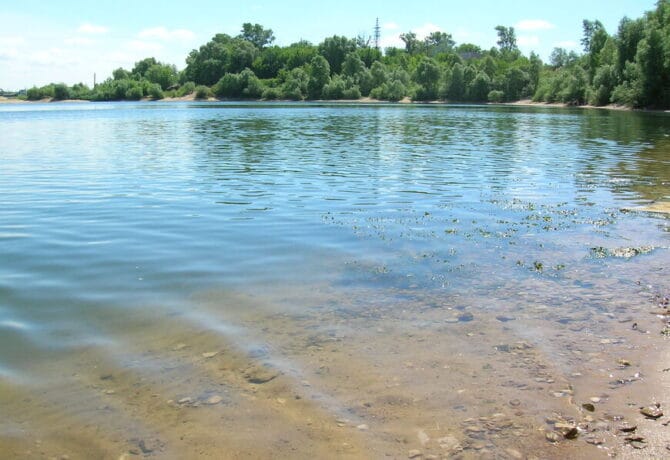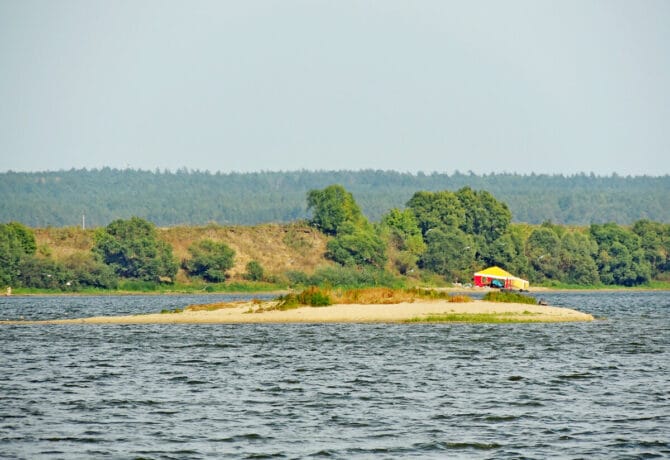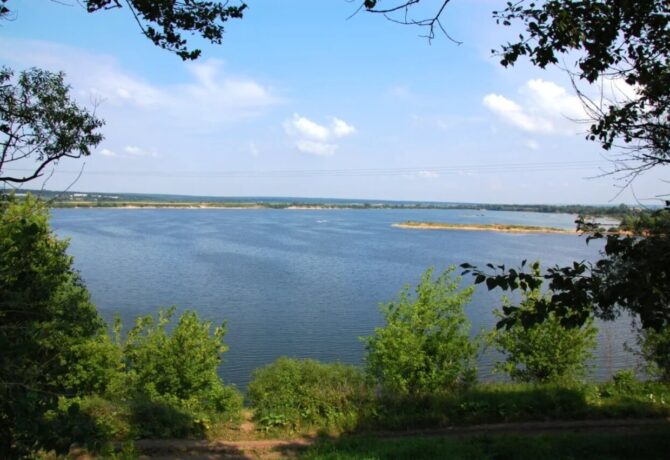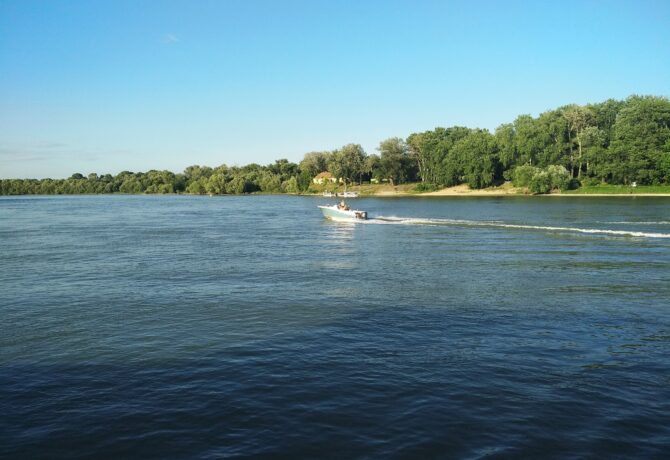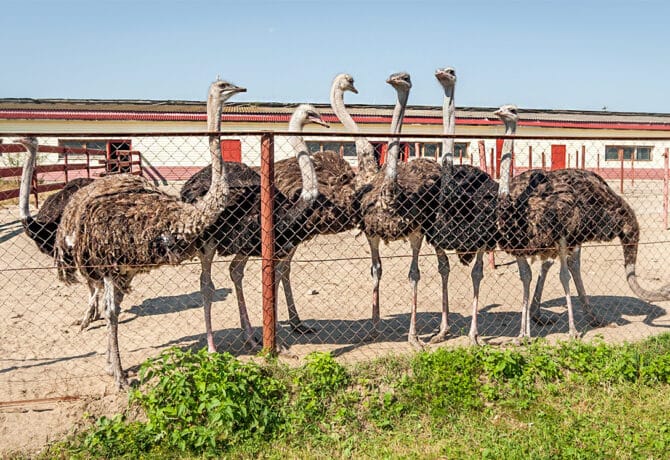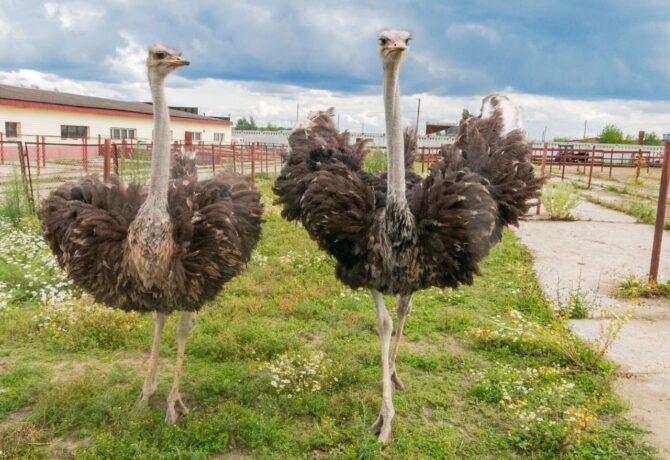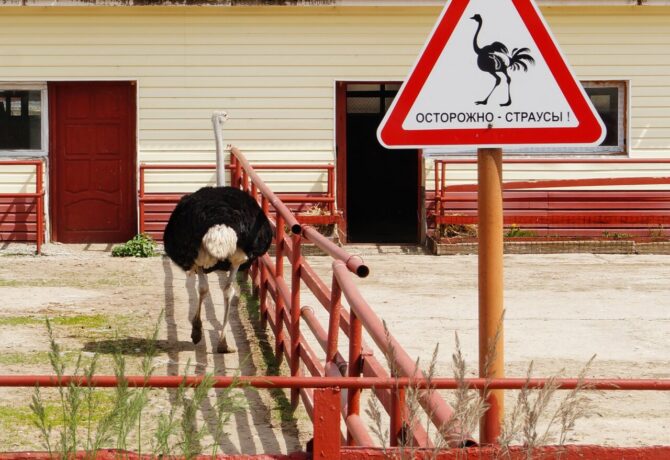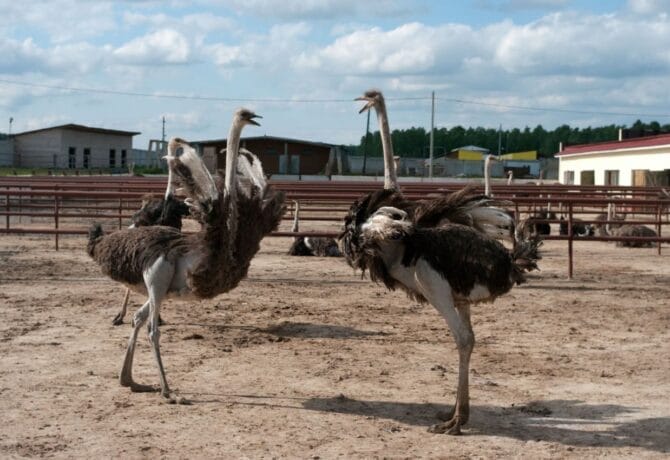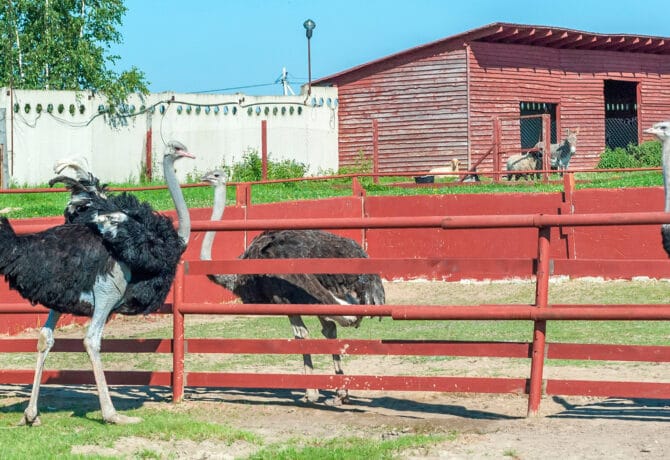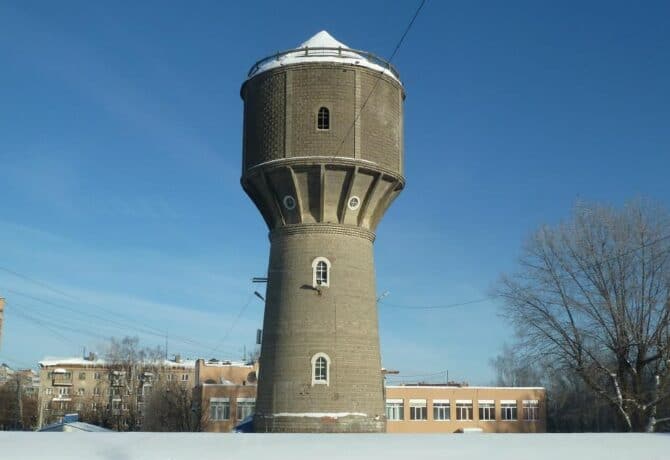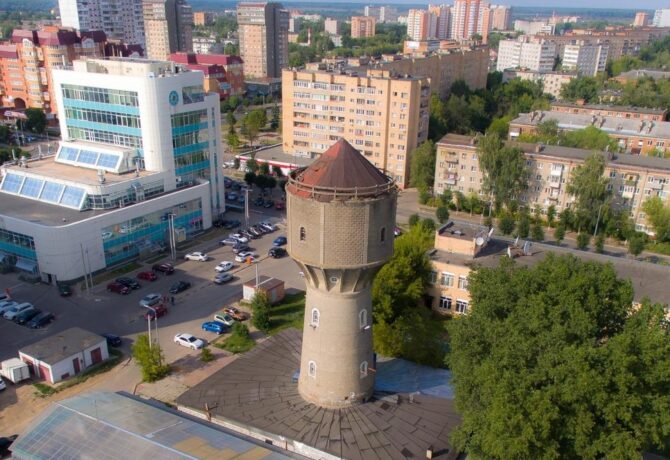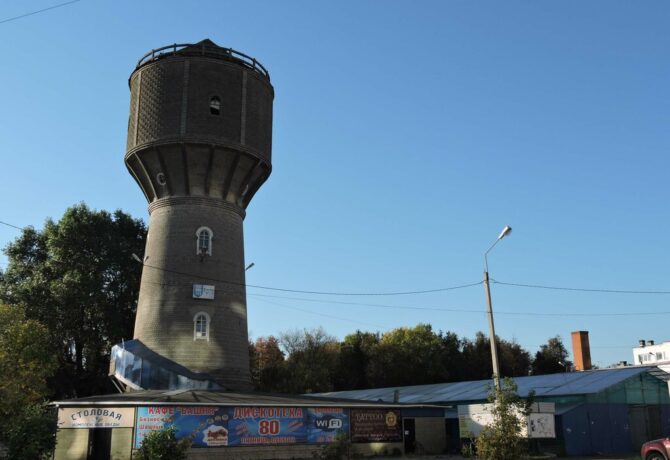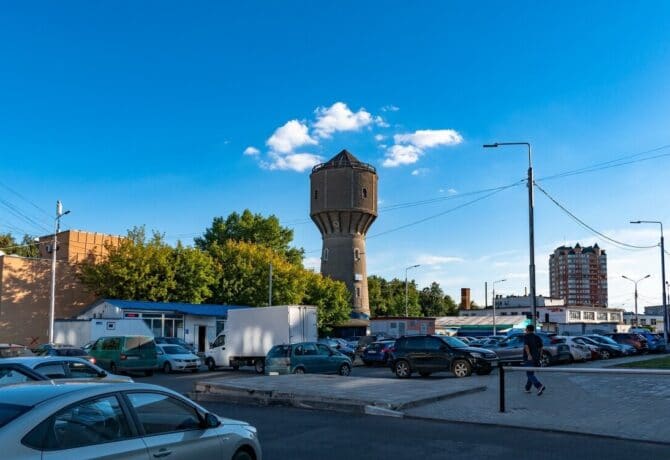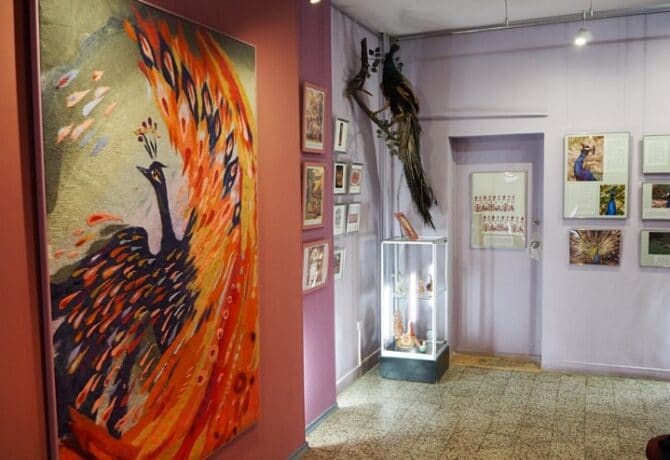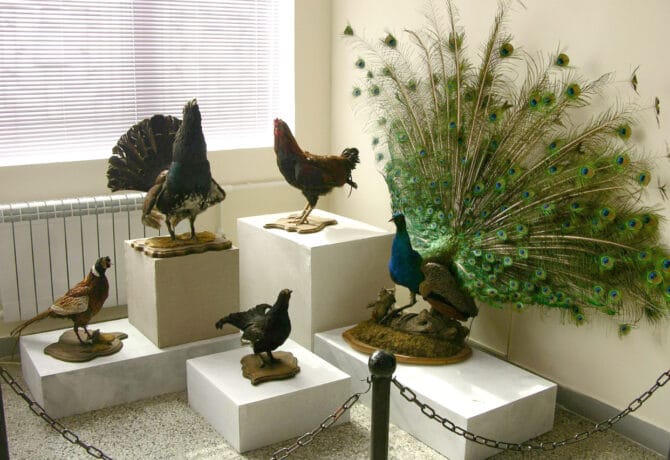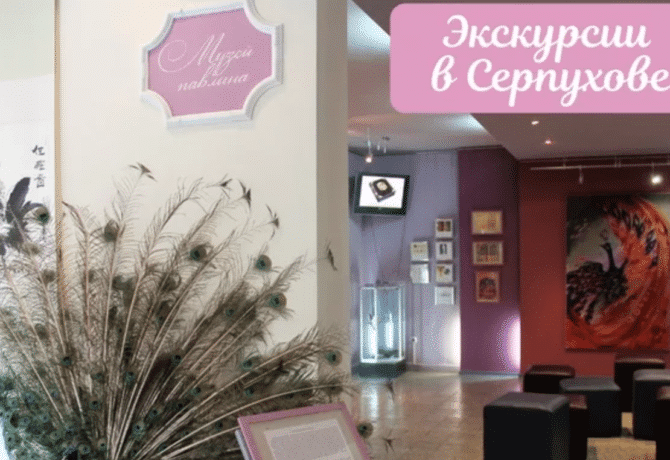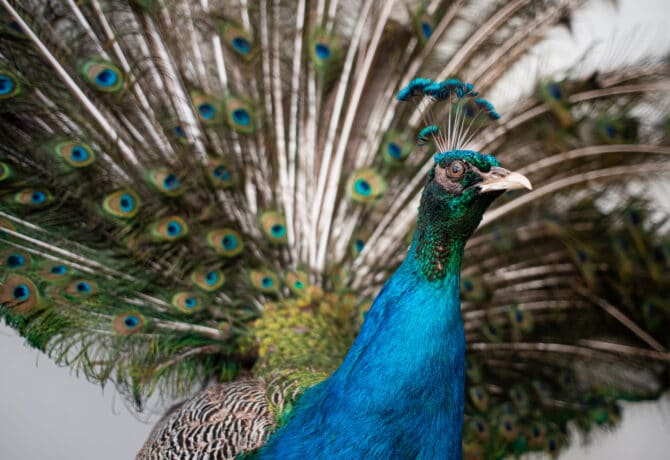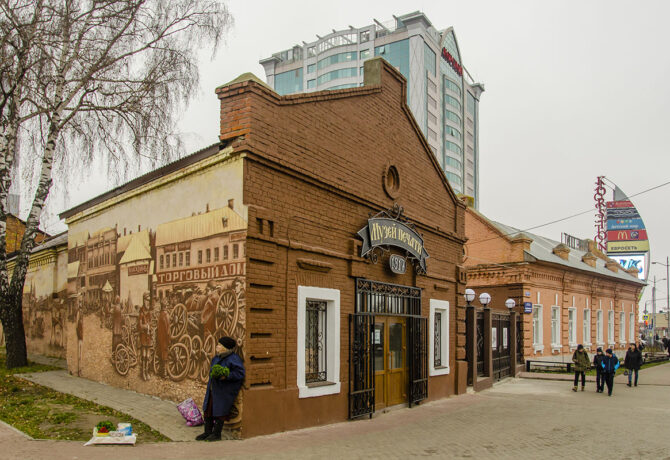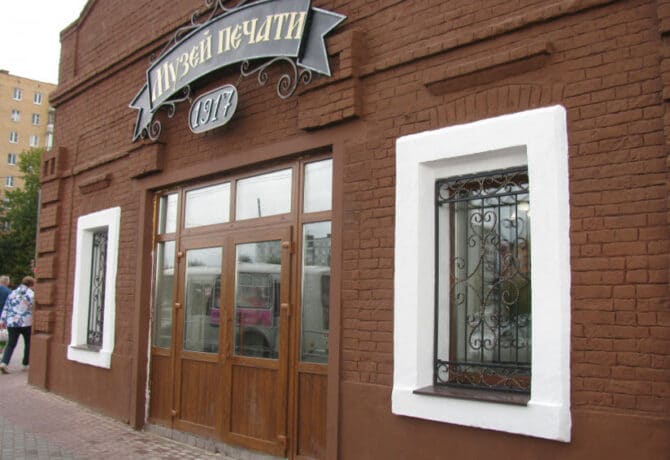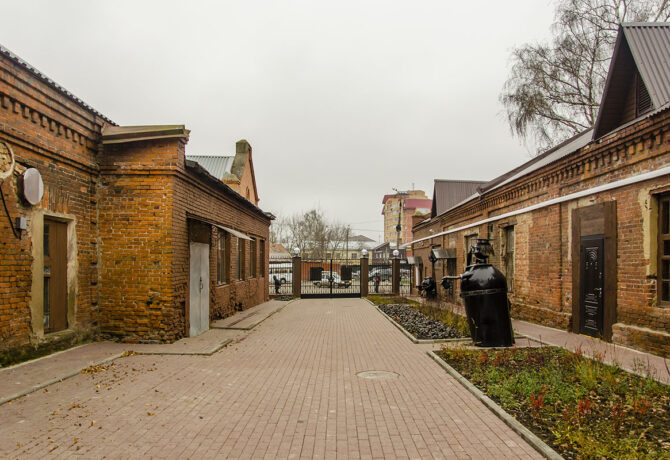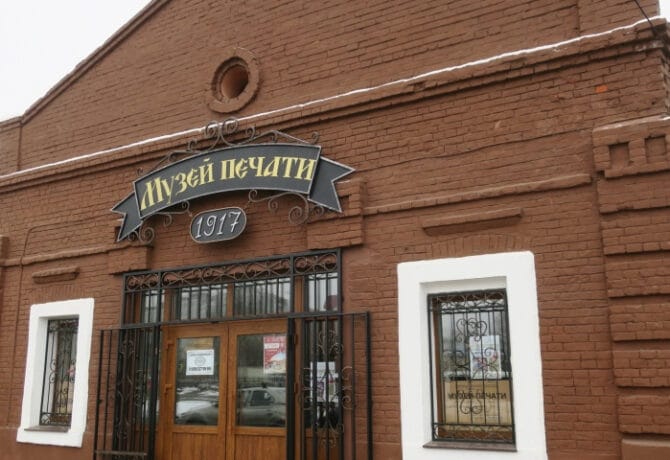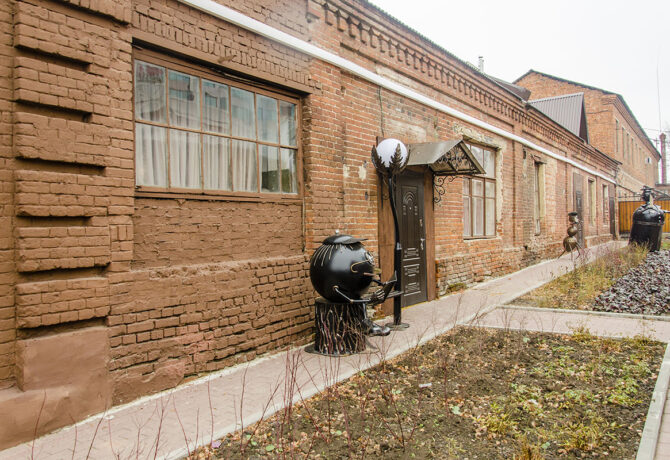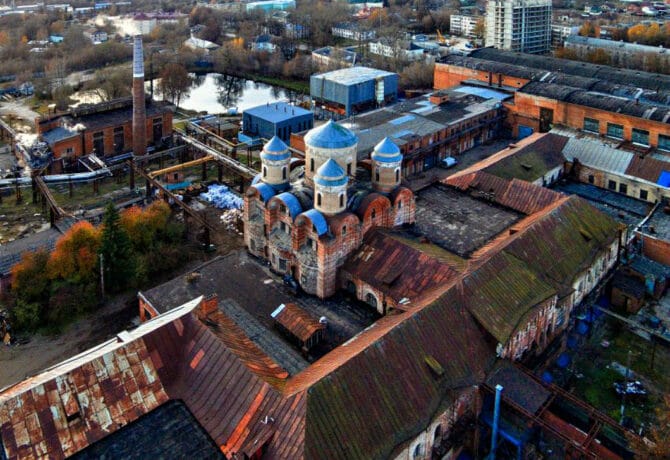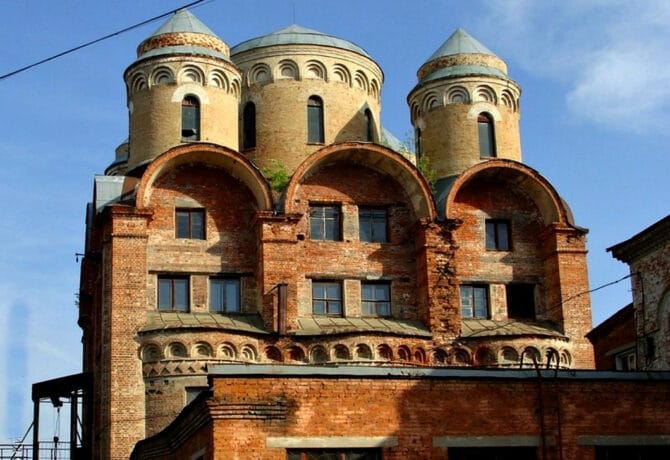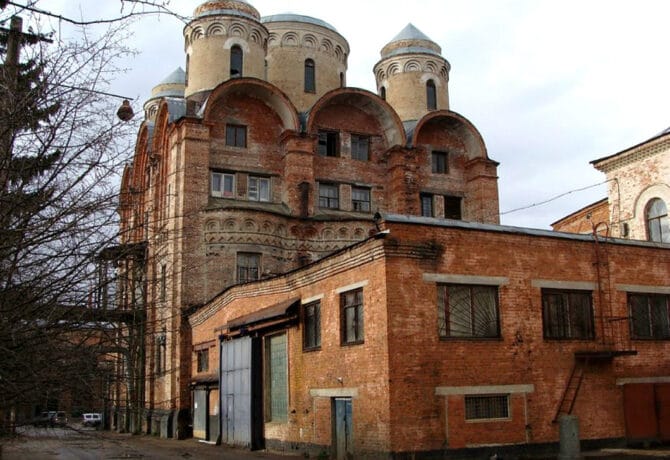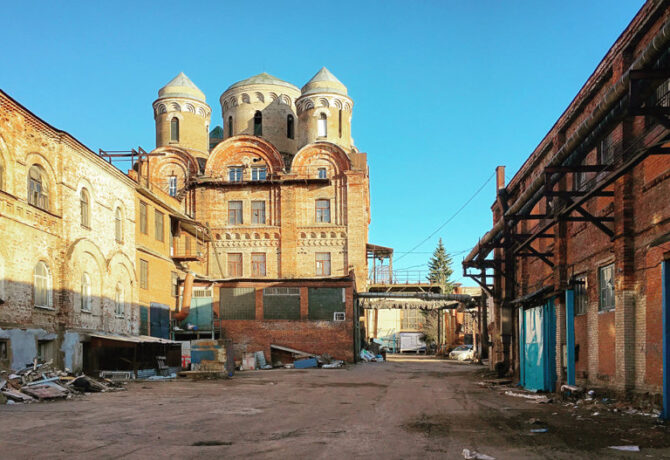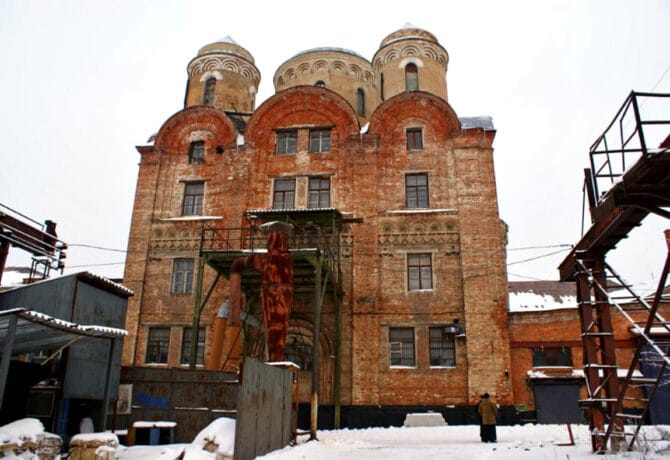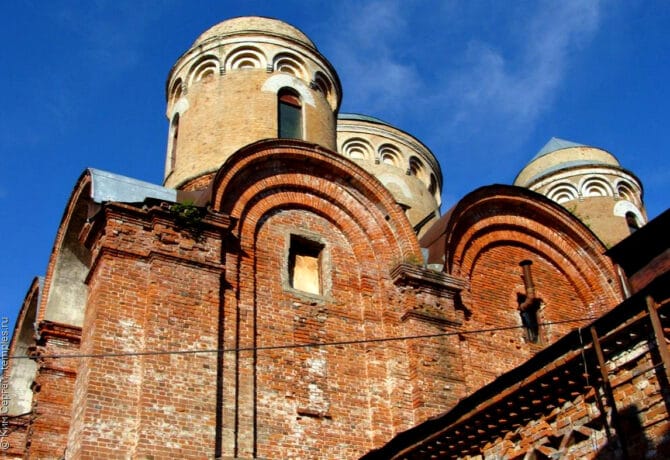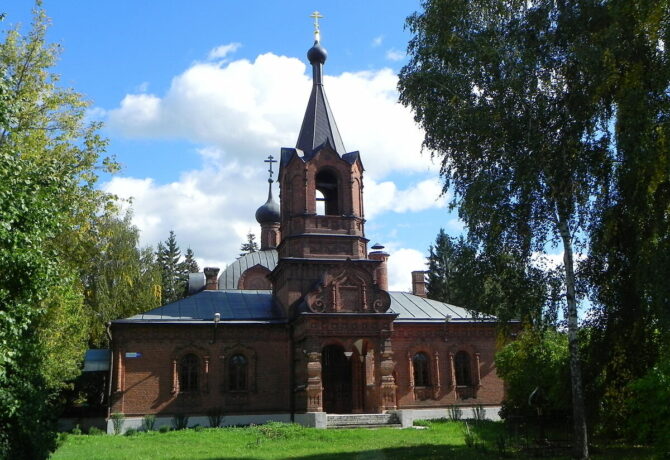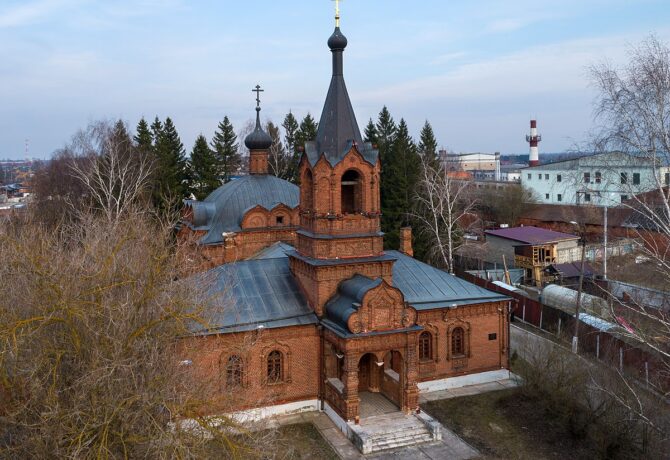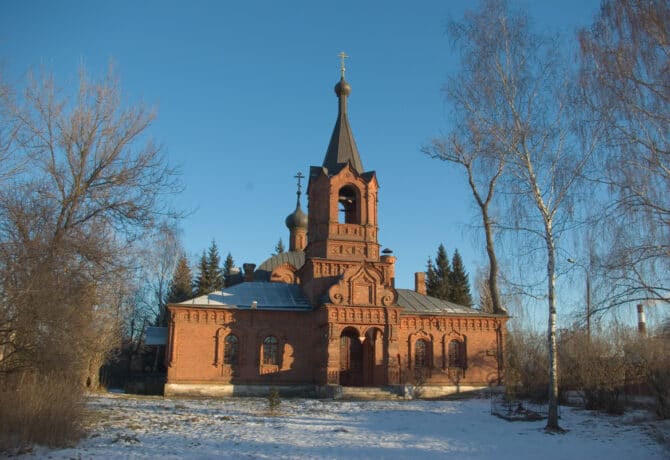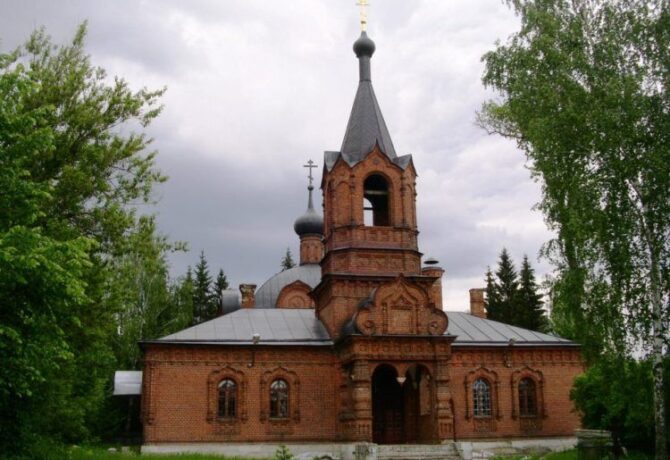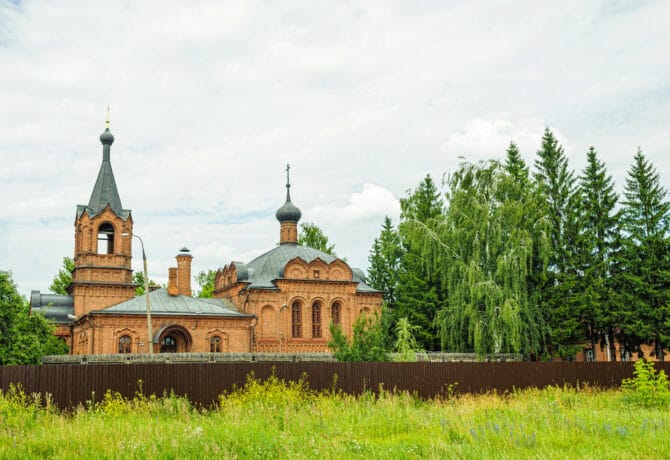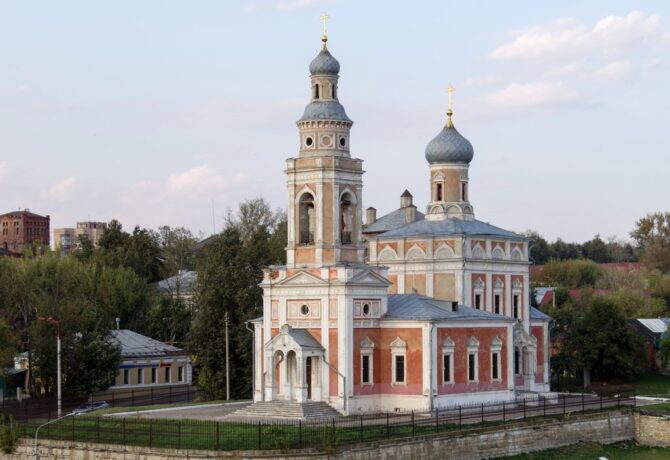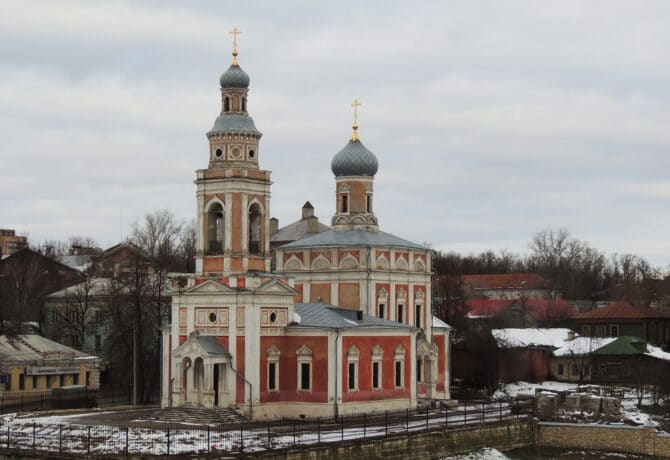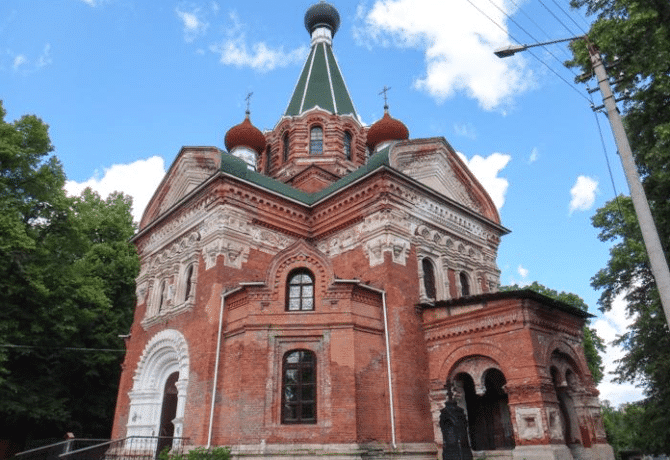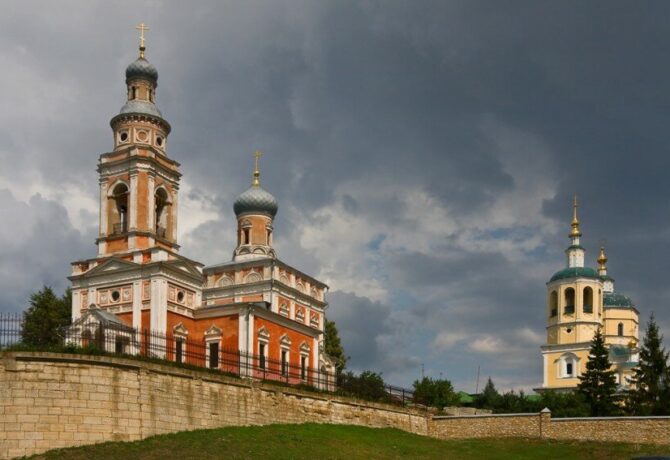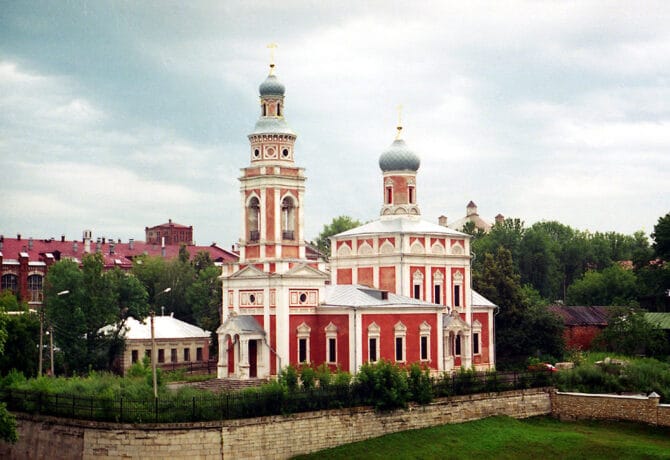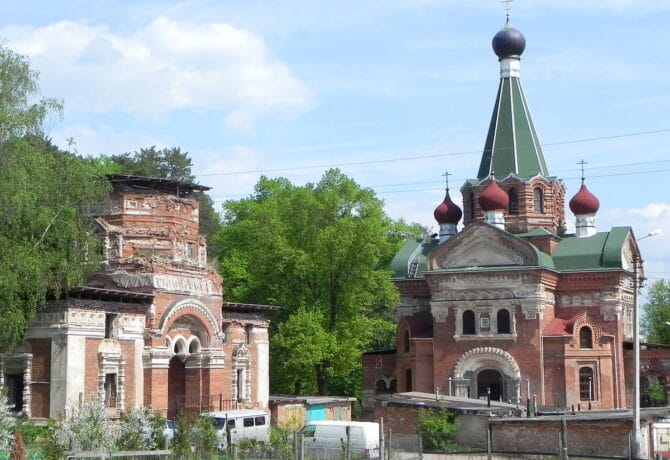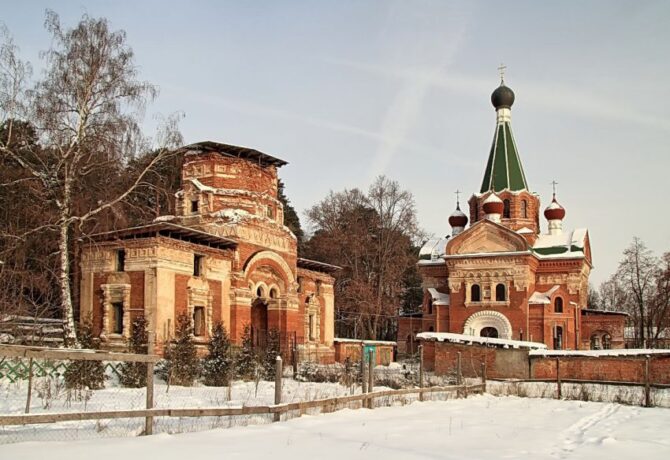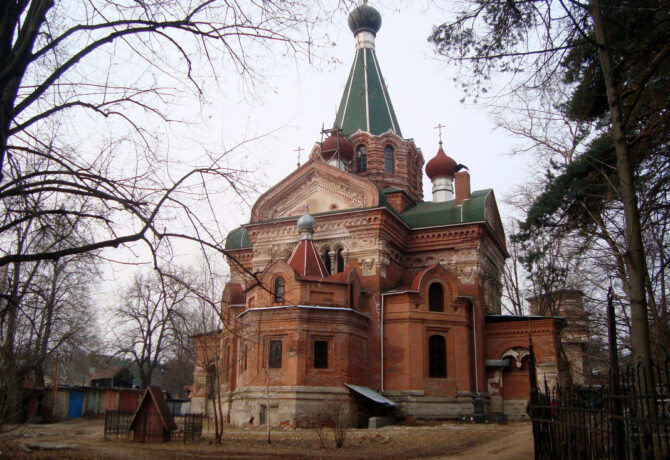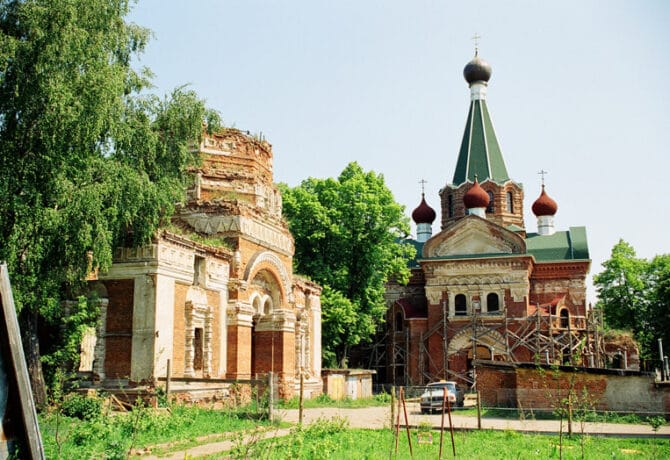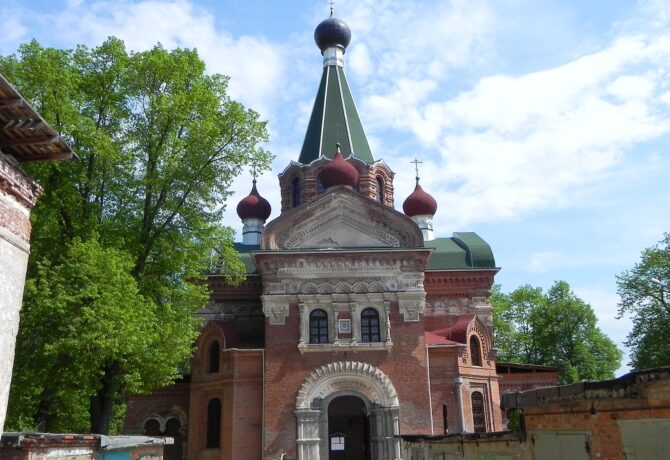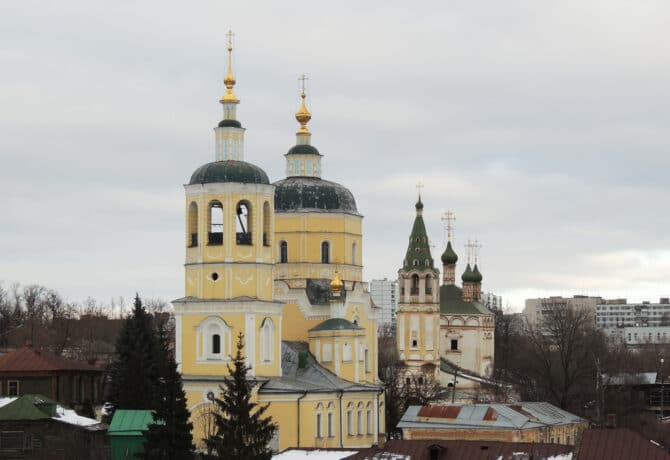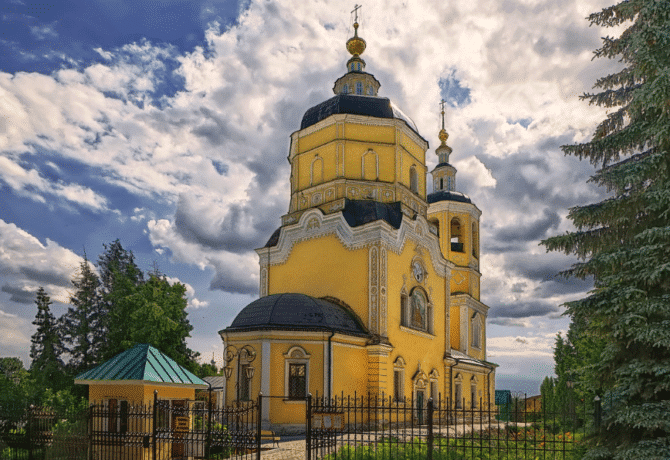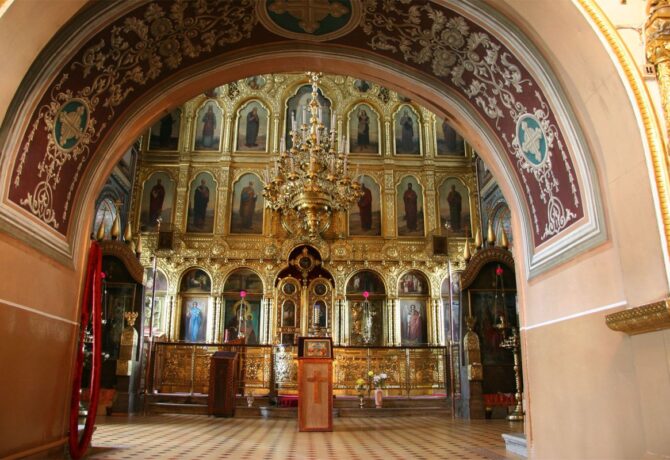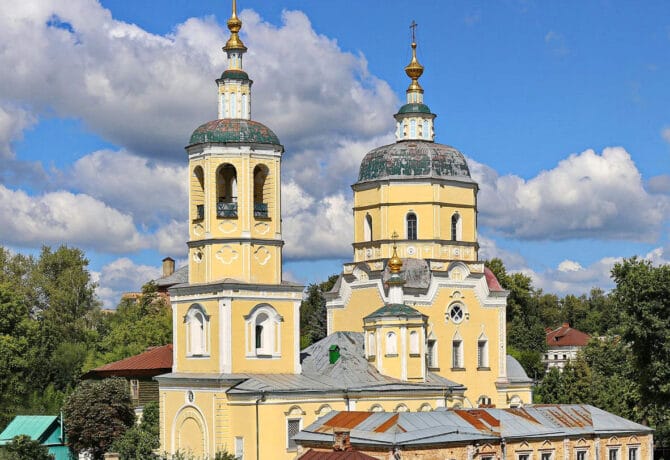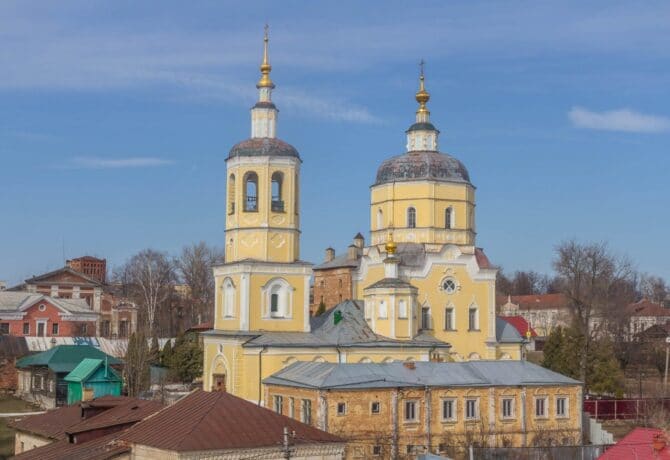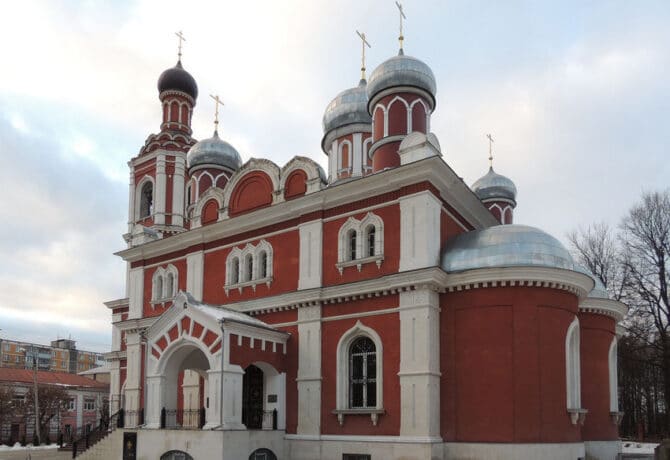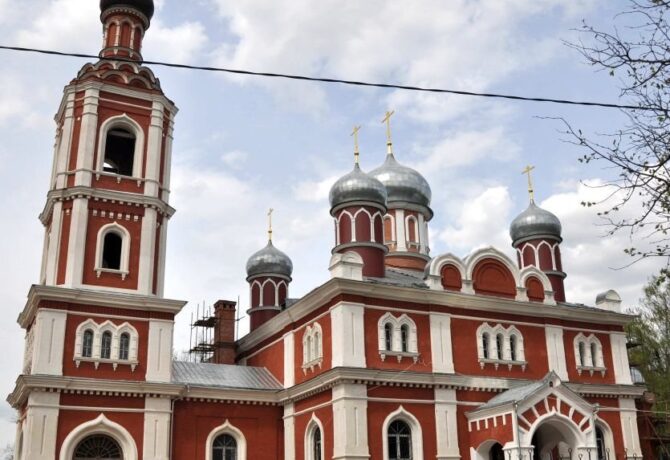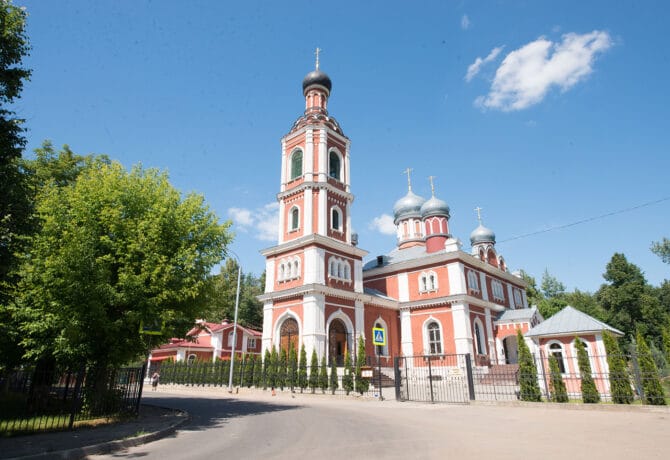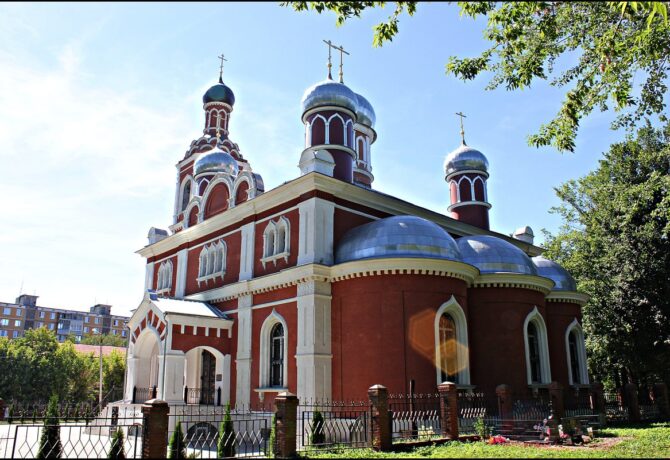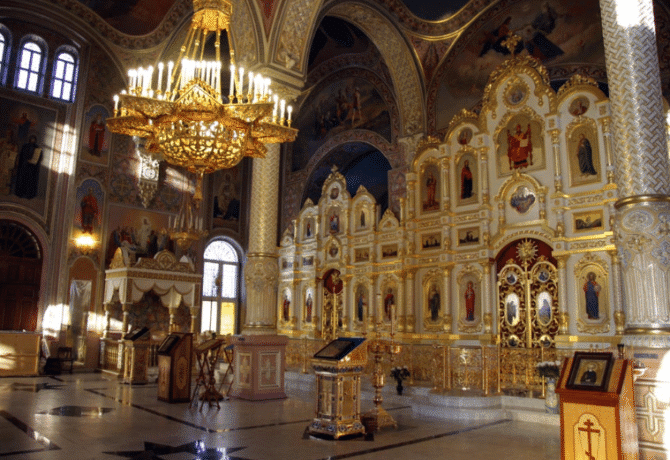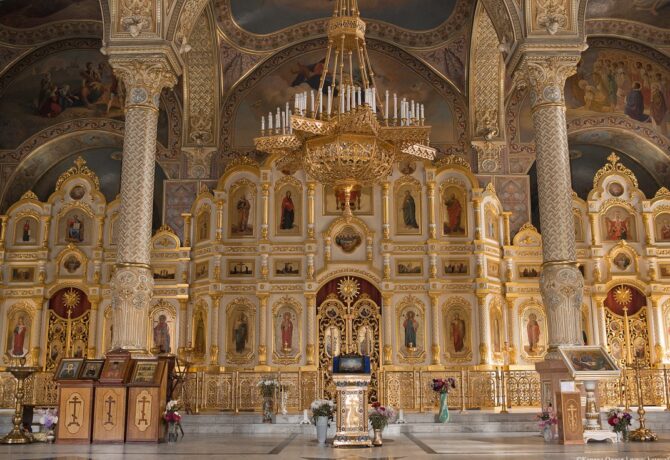In the south of the Moscow region is the city of Serpukhov, filled with historical sights. It is associated with one of the popular tourist routes – a one-day excursion. The city was founded in 1339 and for almost a century was the capital of the specific principality. It was not for nothing that he was awarded the title of “Settlement of Military Valor”. In the Middle Ages, it was a reliable outpost for moscow under construction and rising and other northern cities of Russia. The fortress stopped the Mongol-Tatar invaders and Lithuanian occupiers. Serpukhov army took part in the Battle of Kulikovo. At different times, the military forces of Boris Godunov, Vasily Shuisky and Ivan Bolotnikov were based in the city.
The city was built according to the traditional plan of Russian settlements – in the center was the Kremlin (Detinets), it was surrounded by posad buildings, on the outskirts of the settlement was equipped. In Serpukhov, a large number of places of interest have been preserved, where you can take a walk in one day. If there is a desire to stay here longer, then at the disposal of guests of the city – comfortable hotels at affordable prices, interesting cafés and restaurants, entertainment.
- 1 Serpukhov Kremlin
- 2 Trinity Cathedral
- 3 Cathedral of St. Nicholas the Wonderworker white
- 4 Retail space
- 5 Vysotsky Zachatievsky Monastery
- 6 Vvedensky Vladychny Convent
- 7 Church of the Nativity of the Virgin in Podmoklovo
- 8 Prioksko-Terrasny Reserve
- 9 Pavlenskoye Lake
- 10 Farm “Russian ostrich”
- 11 Water tower
- 12 Peacock Museum
- 13 Museum of Printing
- 14 Temple of Seraphim of Sarov
- 15 Church of the Intercession of the Blessed Virgin Mary
- 16 Church of the Assumption of the Blessed Virgin Mary
- 17 Church of the Savior Not Made by Hands
- 18 Church of Elijah the Prophet
- 19 Church of All Saints
- 20 Attractions Serpukhov on map
Serpukhov Kremlin
It is best to build a route from the Serpukhov Kremlin. It was a powerful fortress built of oak in 1374. Basil III created a powerful line of defense, based on several Oka fortress cities. Serpukhov was the center of this defense. In 1556, the wooden Kremlin was replaced by a white stone one. At the end of the 17th century, when raids by khanates and nomads became irrelevant, the fortress was abandoned and gradually deteriorated. Defensive fortifications (ramparts) were destroyed. The intervention of the Archaeological Society in 1888 gave rise to excavations. Enthusiasts have found provisions for the restoration of the found fragments. Work was not carried out regularly, and in 1934 the building was generally dismantled. Rubble stone, from which the fortress was built, was taken to Moscow for the construction of the subway.
As a result, only two fragments of the wall and the foundation of the once formidable fortress remained on Cathedral Hill along the shore of Nara. During the Soviet period, excavations were carried out in the 1920s, 1980s. Now archaeologists have returned not to the territory to fully restore the history of the ancient Kremlin. Today, the Trinity Cathedral, a memorial to soldiers who fell in the Great Patriotic War, a stable and private houses have been preserved on its territory. The monument “Warrior-Liberator” was created by the sculptor E.V. Vuchetich. Initially, the monument stood in Berlin on the territory of Treptow Park. in 1964 it was transported to the USSR and installed in Serpukhov on Cathedral Hill.
Address: Krasnaya Gorka St., Serpukhov, Moscow Region, Russia
Cathedral Mountain is a large hill of natural origin, which is located in the heart of the city. It rises above the Nara River and at one time was appreciated by Prince Vladimir Andreyevich the Brave. Here the Serpukhov settlement was laid, and only then, for several centuries, the city of Serpukhov was formed and grew around detinets.
Trinity Cathedral
The white-stone temple was built on the territory of the Serpukhov Kremlin in 1696. In its place previously stood a wooden church (1380 year of foundation), which was dilapidated and was demolished. In the 15th century, the chapel of St. Demetrius of Thessalonica was built next to the cathedral, but later it was destroyed and dismantled. The architecture of the Trinity Cathedral combines the features of Moscow Baroque, Classicism and Empire. In the 1930s, the temple was closed, the legs were not blown up. Later it was transferred to the needs of the Serpukhov Historical and Art Museum. In 2011, the cathedral became active again. Services are held here, in 2017 a complete reconstruction began.
Address: 12 Krasnaya Gora St., Serpukhov, Moscow Region, Russia
Cathedral of St. Nicholas the Wonderworker white
To the Cathedral of St. Nicholas from the Trinity Church you need to walk along the street Nizhnyaya Serpeika, then go to the Soviet and walk to Kaluga. This is the main cathedral of Serpukhov. The building was built from 1833 to 1857 according to the project of architects I.T. Tamanskogo and F.M. Shestakova. Earlier on this place there was already a wooden church, mentions of which belong to 1552 and 1620, as well as a stone temple built in 1649. Then in 1713, another cathedral of white limestone was built on this frontal place, but in 1831 the city authorities again applied for a new project. As a result, an architectural masterpiece appeared, which has survived to this day. In 1929, the cathedral was closed and partially destroyed. From 1995 to 2005, restoration and restoration work was carried out. Today, services are held in it, and the Orthodox relic “Asmotion to Childbirth” and the miraculous image of the Mother of God attract pilgrims.
Address: 26/12 Kaluzhskaya St., Serpukhov, Moscow Region, Russia
Retail space
From St. Nicholas Cathedral you can directly go to the central square of Serpukhov. Today it bears the name of the leader of the revolution V.I. Lenina, and previously called Torgovaya. After the revolution, it was briefly renamed after the Third International. The square was the venue for demonstrations, processions, celebrations, and was also the main transport hub of the city. Until 1934, there was a church of Alexander Nevsky, which was blown up and dismantled. In 2014, a complete reconstruction was carried out. On the site of the former temple there is a memorial stone, monuments to Prince Svyatoslav and Peter Stolypin appeared. On the square there are four squares, there is a small church, which was once part of the Crucifixion Monastery. Restoration work is underway in it. After improvement and reconstruction, the square again became the central place for major public holidays, mass festivities, solemn parades.
Vysotsky Zachatievsky Monastery
The monastery is located one and a half kilometers from the Trading Square. The shortest way lies along the 2nd Moscow Street. It will lead to one of the oldest monasteries in Russia – Vysotsky Zachatievsky. It was founded by Sergius of Radonezh and Prince Vladimir the Brave in 1374. The monastery performed two roles at the same time – it was an Orthodox monastery and part of the defense system of Serpukhov. Today it is a center of pilgrimage to the icon of the Mother of God “The Inexorable Chalice”. According to legend, it helps to get rid of the harmful dependencies of alcoholism and drug addiction. Brothers-monks the last century had more than once to clear the territory of the monastery from filth. In 1918, mass executions were carried out under its walls. Latvian shooters executed anyone who came under suspicion of desertion. After the 30s, there were cattle pens, warehouses, garages. A third of the architectural ensemble was destroyed, In 1996, restoration work began. Today on the territory you can see and visit the Zachatievsky Cathedral, the Church of the Intercession of the Blessed Virgin Mary with a refectory, All Saints, St. Sergius of Radonezh with a chapel in honor of Nicholas and the sacristy, the gate church of the Three Saints with a bell tower.
Address: Kaluzhskaya str., 5/3, Serpukhov.
Vvedensky Vladychny Convent
In order to visit the women’s Orthodox monastery, you need to move to the other side of the Nara River. Vvedensky Vladychny Convent was founded in 1360. Until 1806, brothers-monks lived in it. After the monastery was given to the sisters. The surviving temples were built from the period of the 16th-17th centuries. All of them are objects of national heritage. Pilgrims come here to venerate the icons with the relics of Saints Nikita Stolpnik and Lazarus the Four-Day-Old, as well as the miraculous image of the Mother of God “Vsetsaritsa”. The most interesting architectural objects are the Cathedral of the Introduction to the Church of the Blessed Virgin Mary (built during the reign of Boris Godunov), the Church of the Great Martyr George the Victorious (late 16th century), the Church of St. Alexis (17th century), the Gate Church of the Martyr Theodotus of Ancyra (1599).
For pilgrims and tourists, it will also be interesting to visit the central square of the monastery, where the healing spring “Inextinguishable Chalice” is located. Here you can drink holy water, as well as take a bottle with you. Next to the holy gates is the Orthodox Gymnasium. Here they teach not only the Word of God, but also secular sciences. Additional classes are available to choose from. These include choreography, painting, journalism, photography, chess and choral singing.
Your children can be shown peacocks that live in enclosures. You can take pictures with them. For the youngest guests there is a fabulous corner. There is a watermill and a wooden bridge. You can have a snack during the tour in the refectory of the monastery. The sisters bake monastic bread, which is sold immediately.
Address: Vvedensky Vladychny Convent, Oktyabrskaya Street, Serpukhov.
Serpukhov Nearby
On this you can finish the excursion day, relax, riding on a boat along the Oka, or return to the hotel. Excellent dinner and a comfortable lounge area are ready to offer hotels “Province”, “Provence 4 seasons”, “Corston Club”. The following four main attractions are out of town, so you will need transport or a transfer booked at the hotel. You can also inspect them in one day.
Church of the Nativity of the Virgin in Podmoklovo
The Orthodox church in the village of Podmoklovo was built in the Golitsyn Baroque style. It is more like a rotunda in the Italian style. It was built by order of the Russian diplomat Grigory Fedorovich Dolgoruky in 1714. This charming building served as an Orthodox parish until 1937. Then the church was closed and transferred to the needs of the local collective farm. A granary was organized in the building. In the 80s, the temple was attacked by vandals, several statues were destroyed. Then they were restored by the forces of the All-Russian Art Scientific and Restoration Center named after I. E. Grabarya. Since 1988, full-fledged restoration work has begun. The object was included in the UNESCO World Heritage List. Restoration work is still underway and should be completed in [y]. The wall painting “The Last Judgment” has already been fully restored. The face of one of the sinners, who is in the claws of the devil, resembles the appearance of the Russian poet M.Yu. Lermontov. It turns out that he was the enemy of one of the owners of the estate, who ordered to capture the image in the picture of the last judgment.
Address: Podmoklovo village, Serpukhov district, Moscow region, Russia
Prioksko-Terrasny Reserve
A unique biosphere reserve is located in the village of Pushchino. The distance from Podmoklovo is about 22 km. The reserve has been part of unesco’s World Network of Biosphere Reserves since 1979. The territory came under state protection immediately after the Great Patriotic War. The reserve was officially registered on June 19, 1945. In the protected area grows 913 species of plants, live 153 species of birds and 57 species of animals. Among them are bison, beaver population, spotted deer and others.
When visiting a natural attraction, you need to take into account all the pros and cons of its infrastructure. Parking is available in front of the entrance. With free space will help to determine the regulator. Groups depart on routes every half hour. After the walk, you can have a snack with hot pastries with tea, the products are sold in kiosks. In the summer, there are a lot of mosquitoes, so you should take with you a means of protection against them. There is not a single bench along the entire hiking route. Shoes should be comfortable, otherwise you can quickly get tired. It is best to come here in the morning, when there are not so many visitors. The reserve starts work from 9 am (ends at 15.00 – 16.00). Tickets: 200 – 400 rub. There are areas for a picnic.
Address: Professor Vitkevich Street, Pushchino, Moscow Region.
Pavlenskoye Lake
This water area is also called the Tsimlyansk quarry. Pavlenskoye Lake is a place where people come to rest with fishing. Previously, beach areas were landscaped here, but recently the coast is quite neglected. But fishermen and picnic lovers here is a real expanse. The lake is connected to the Oka by a duct, so there are constant migrations of freshwater fish species. The usual catch is perch, bream, pike, roach, ruff, guster. Summer and winter ice fishing is common. In summer, especially in July, the water warms up to a comfortable temperature and you can swim in the lake.
If you stay in Serpukhov in a hotel with a mangal zone, then a trip to Lake Pavlenskoye will become one of the main routes for recreation. Hotels that provide barbecue services are usually located on the territory of recreation centers. The most popular of them are “Tsargrad”, “Senino”, country club “Khutorok on the Oka”, country complex “Green Hill”.
Farm “Russian ostrich”
If there is no desire to go fishing, and the barbecue in the hotel is still there, then you can go to the village of Starye Kuzmenki on a farm where Russian ostriches are grown. People come here with children, because, in addition to an exciting excursion, entertainment programs are offered here, a petting zoo is organized. Visitors will have an unforgettable day in nature, acquaintance with giant birds, pets, a master class on farming and making traditional Russian toys.
Address: Starye Kuzmenki, Serpukhov district, Moscow region.
In Serpukhov there are still many places of interest, which must be visited, if time allows and there is a desire to learn a little more about the city. A pleasant pastime will be a visit to the historical and artistic complex. This is the largest art gallery in the Moscow region, which presents a collection of Serpukhov manufacturer and merchant A.V. Maraeva. Then you can walk along the following route.
Water tower
Not far from the “flea market” is an old water tower. It was built in 1926 according to the project of Jacobi. Until high-rise new buildings appeared, it was considered the tallest building in the city (28 m). When the water supply system was replaced by a modern analogue, the tower was out of business. The authorities have long thought about how to adapt the architectural landmark to the needs of the city’s residents. Finally, they gave it for services. Now in the tower there is a beauty salon and a café. It is possible to order barbecue, drinks, on weekends to dance at the disco.
Address: 38 Vodonapornaya St., Serpukhov, Moscow Region, Russia
Peacock Museum
The coat of arms and flag of Serpukhov depicts a peacock. About how the strange southern bird got to the symbolism of the Russian city of the Moscow region, the exposition of the Peacock Museum will tell. A fascinating excursion will be complemented by watching an animated film, which the museum staff specially ordered for the full disclosure of the secret. Entrance fee. An adult ticket costs 50 rubles, a children’s 30 rubles In the museum and exhibition complex, you can also visit the exposition “The World of the Russian Village”, virtual and temporary exhibitions.
Address: Museum and Exhibition Center, Gorky Street, Serpukhov.
Museum of Printing
In the historical part of the city in the premises of the old printing house there is a museum of printing. It occupies two buildings of pre-revolutionary construction (1890 and 1914). In 1917, a printing house was opened here, which still works. The exposition contains materials on the history of printing and journalism in Serpukhov. The pre-revolutionary period and illegal work on printing propaganda leaflets, the official opening of a printing house after the revolution, the publication of their own newspaper will be touched upon. An important part of the exhibits is evidence of the heroic work of Serpukhov journalists during the Great Patriotic War. In 2017, the printing house celebrated its 100th anniversary, the newspaper became a century-old jubilee two years later.
Address: Museum of Printing, Passage Mishina, Serpukhov.
Near the historical center there are comfortable hotels offering guests of the city improved living conditions. Hotel “Dvoryanskaya” is located just 200 meters from the main attractions of Serpukhov. Highly appreciated by the guests of the hotel “Mark” (400 m). These are popular places where travelers like to stay, so booking a room should be taken care of in advance.
Serpukhov is famous for its abundance of Orthodox churches. The city itself is built in a kind of natural amphitheater. The unique landscape and gilded crosses over the shiny domes give it a look of amazing beauty. Good panoramic views open from the territory of cathedral mountain, but people come here to also come into contact with the Orthodox traditions of the Russian people. Therefore, another additional route will pass through the temples built in the pre-revolutionary period and our time.
Temple of Seraphim of Sarov
In the northern part of the city there is an Orthodox Seraphimosarovskaya Church. It was built in 1915 in the neo-Russian architectural style next to the almshouse of the Konshin manufacturers. It was a factory town, where, along with the main workshops, there were residential buildings for workers and their families. In the almshouse, built on the money of the widow of Serpukhov millionaire I.N. Konshina Alexandra Ivanovna, kept temporarily disabled people. They underwent the necessary treatment here, and the church was traditionally an integral part of such institutions. After the revolution, the temple was closed, and the Serpukhov Automobile Plant was founded on the territory of the factory in 1939. The church building was adapted to the needs of production. Today the temple is again operating. It holds services. The building is an object of architectural heritage of regional importance.
Address: 45 Pushkina St., Serpukhov, Moscow Region, Russia
Church of the Intercession of the Blessed Virgin Mary
The Old Believer church was built from 1908 to 1910. The author of the project was the Russian architect Mecheslav Piotrovich. The funds were allocated by the manufacturer and merchant Anna Vasilyevna Maraeva. Her daughter Anfisa died as a result of her injuries after falling from a horse. Part of the funds set ahead for her dowry was spent on the construction of a new church building. The old one was built in 1833 (now closed and not operating). In Soviet times, the temple remained active. From 1912 to 1987, regular services were held there. The number of parishioners decreased annually, so in 1988 the building was transferred to the Serpukhov Historical and Art Museum. There is an exposition dedicated to casting, salaries, fabric, furniture, handwritten and old printed books created by the hands of the Old Believers. The original iconostasis has been fully preserved in the temple.
Address: Chekhov Str., 81b, Serpukhov, Moscow Region, Russia
Church of the Assumption of the Blessed Virgin Mary
On the site of the historical Posad is the Church of the Assumption of the Blessed Virgin. Here, on the site of a burnt wooden church in 1744, a new stone church was erected, made in Russian traditional style. In 1817, another fire severely damaged the building. Money for its restoration was allocated by Serpukhov manufacturer Nikolai Maksimovich Konshin. Restoration and restoration lasted from 1846 to 1854. The main building, its two aisles, the refectory and the bell tower with the chapel of Nikola Svyatosha were completely restored. In the 30s, the church was closed, and the abbot Alexy Sinaisky was shot at the Butovo training ground in 1938. In the 90s, it was decided to return the church to the ROC. Now it is again operating, but worship services are not held regularly.
Address: 5 Volodarskogo St., Serpukhov, Moscow Region, Russia
Church of the Savior Not Made by Hands
The Orthodox Church, consecrated in honor of the image of the Savior Not Made by Hands, was built from 1893 to 1896 with the money of the Serpukhov merchant Vasily Astapov. The project belongs to the Russian architect, academician of the Imperial Academy of Arts Roman Ivanovich Klein. At one time, it was a real decoration of the Zararya district (part of the city located on the right bank of the Nara). The hipped church with shiny domes, two aisles and a high bell tower was the most visited place of the settlement. After the revolution, she was first beheaded, the abbot and priests were shot, and the building was given to a fish warehouse and a smokehouse. Until now, the walls show sooty frescoes in the style of academic painting of the late 19th century. In the late 90s, it was decided to transfer the temple back to the Russian Orthodox Church. It stands next to the cemetery. Relatives of the deceased should have a place where they can put a candle. The temple is active, restoration work continues.
Address: 52 Chernyshevskogo St., Serpukhov, Moscow Region, Russia
Church of Elijah the Prophet
On the territory of the historical Posad is the Elijah Church built in 1748. Many residents of Serpukhov consider it the most beautiful in the city. It is made in the style of Moscow Baroque. The interior decoration was preserved due to the fact that in Soviet times the temple remained active. The clergy found the means to carry out repair work and even finish the construction. In the middle of the twentieth century, a chapel was added in the name of the icon of the Mother of God “Recovery of the Dead”. There is another chapel in the name of the Great Martyr Catherine, a bell tower and a refectory.
Address: 8 Volodarskogo St., Serpukhov, Moscow Region, Russia
Church of All Saints
The Orthodox Church in the Russian-Byzantine architectural style was built from 1858 to 1870. The question of its construction was raised by the residents of the city. The fact is that next to the city cemetery, where the dead were buried for 70 years, there was no temple, there was only a small chapel. It was allowed to be built on the collected donations. The first to invest in the case was the local manufacturer N.M. Konshin. He donated 10 thousand rubles. Part of the money went to the development of the project. It was taken up by architects Vladislav Grudzin and Kazimir Grinevsky. Under their leadership, the building of the temple with a chapel was built, and there was not enough money for the bell tower. It was completed a little later, in 1875. The ministers of the church performed their duties until 1928, when the temple was closed, looted, weddings destroyed, and the bell tower turned into an antenna. In 1995, the church was returned to believers, who again began to carry out restoration work with their donations. Today, a beautiful temple rises again above Rabfakovsky Lane, in which services are regularly held.
Address: Church of All Saints, Rabfakovsky lane, Serpukhov.
No less interesting may be the hotels themselves Serpukhov. For example, in the hotel complex “Province” opened a private Museum of Bread. Its premises in the 19th century were part of Popov’s bakery. Before the revolution, bread was baked here for the townspeople, and serpukhov delicacy “serpets” was also produced. Today, all visitors to the museum receive this gastronomic miracle as a gift. In its appearance, the product resembles a bagel. Inside it are a variety of fillings. Restaurants and cafes of the city staged an unofficial competition, who will have a sickle the most delicious. But the main secret of the delicacy is that according to legend, it brings good luck to its consumers.
In 2018, Serpukhov entered the tourist route “Golden Ring of Russia”. This gave a new impetus to the development of the ancient city. Now it is modernizing the tourist infrastructure, parking lots are being built, the level of hospitality is being pulled up to international standards. Restoration work in temples and monasteries is in full swing, new squares with alleys are being broken, points of an entertaining nature are being created. Gradually, Serpukhov is turning from an out-of-state provincial town into a full-fledged center of Russian tourism.


